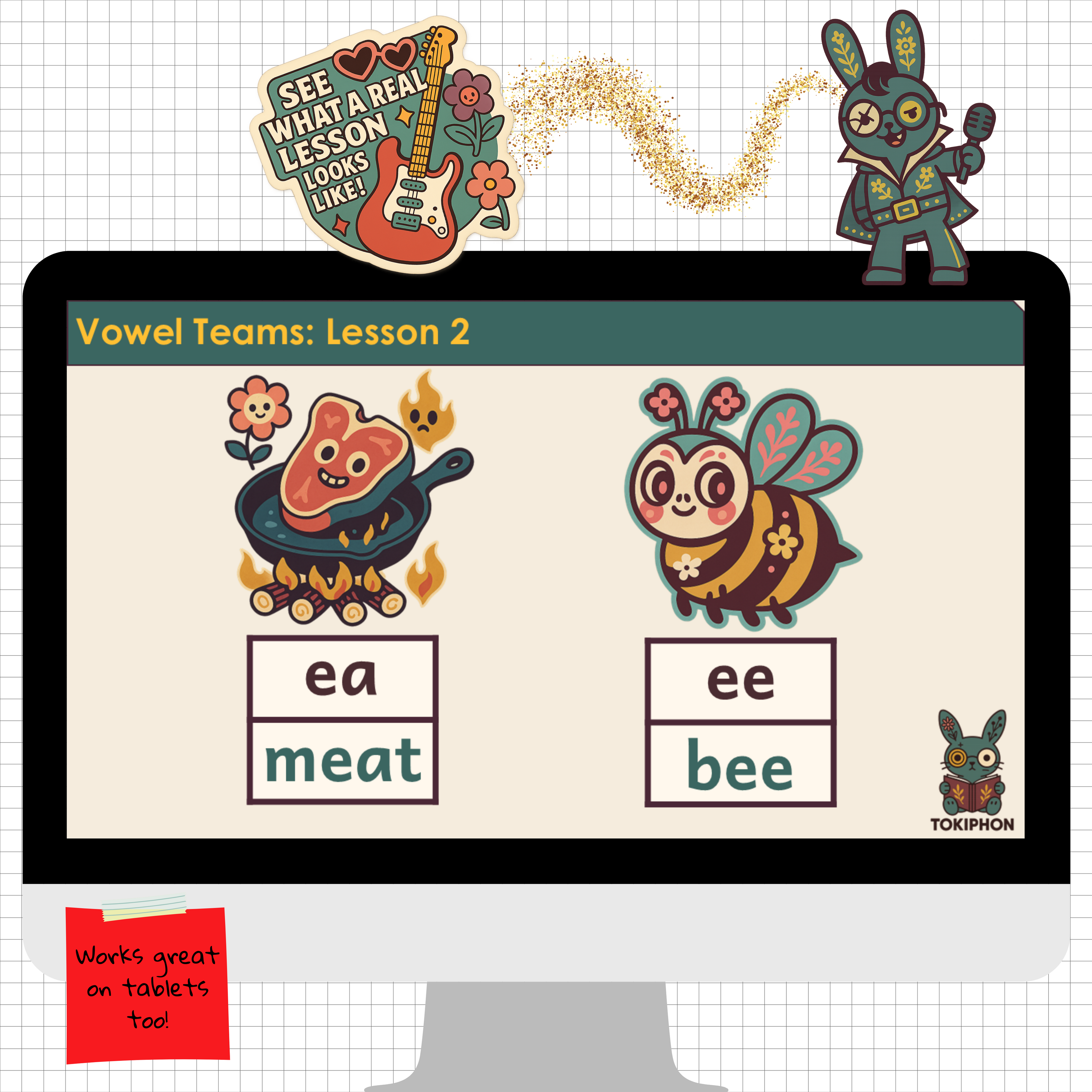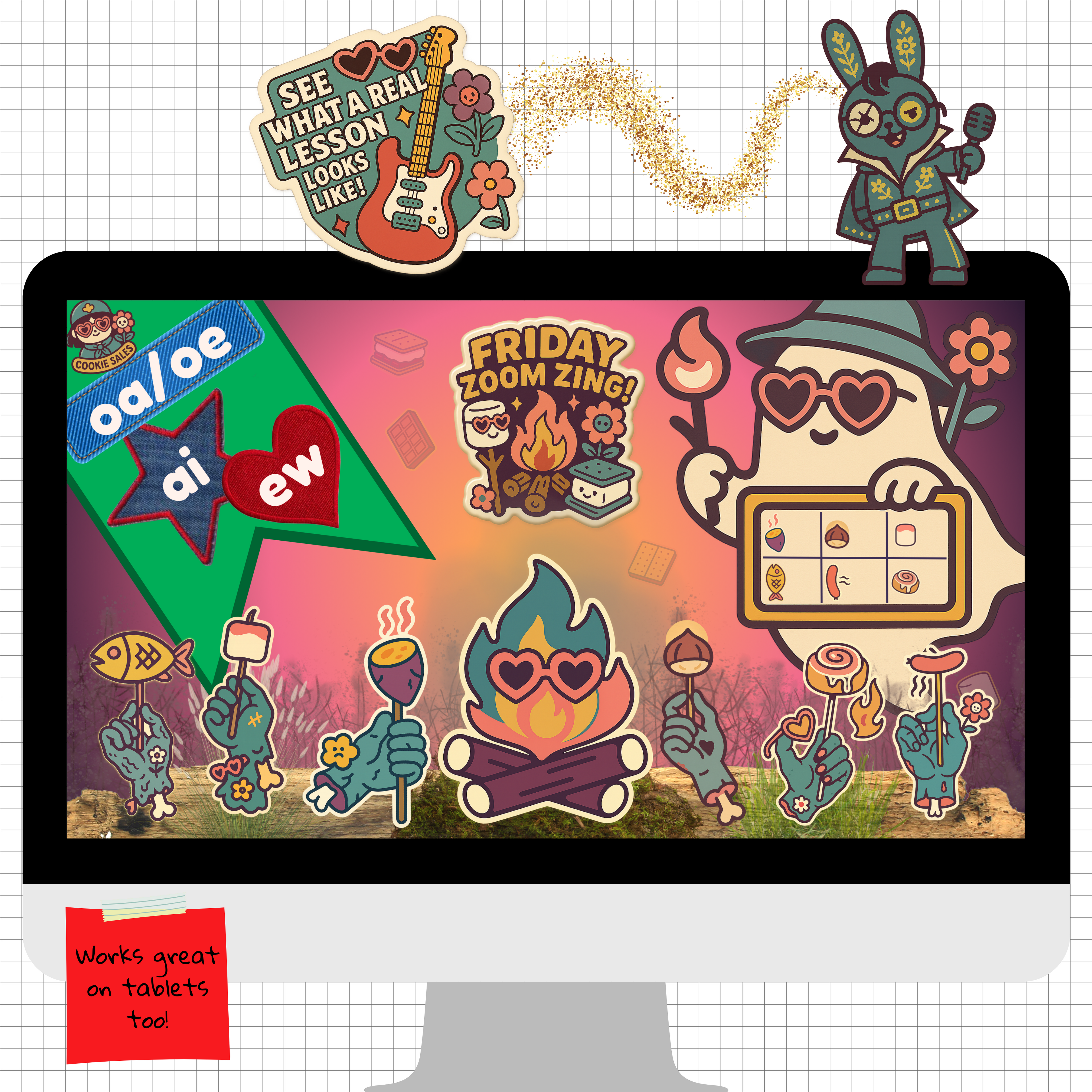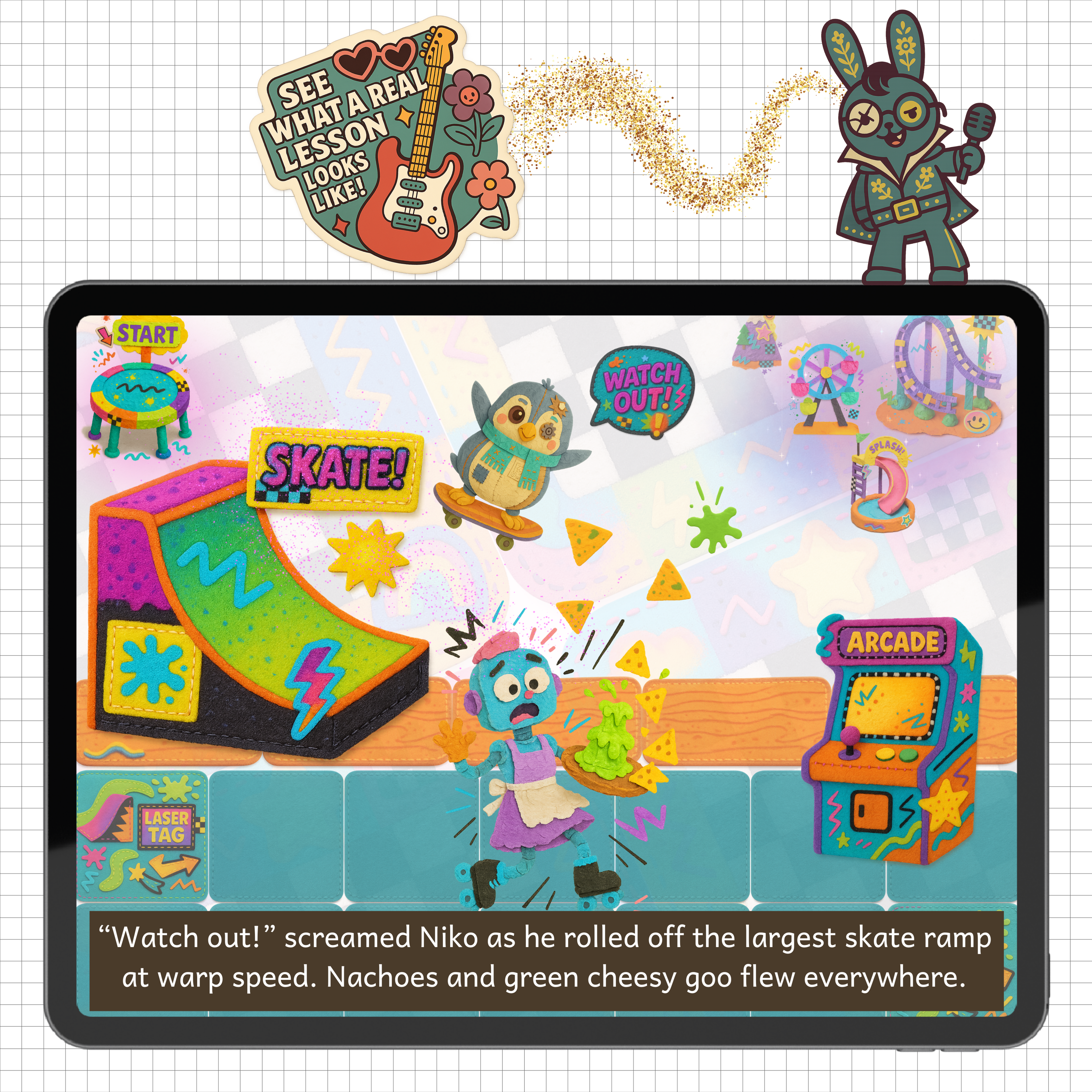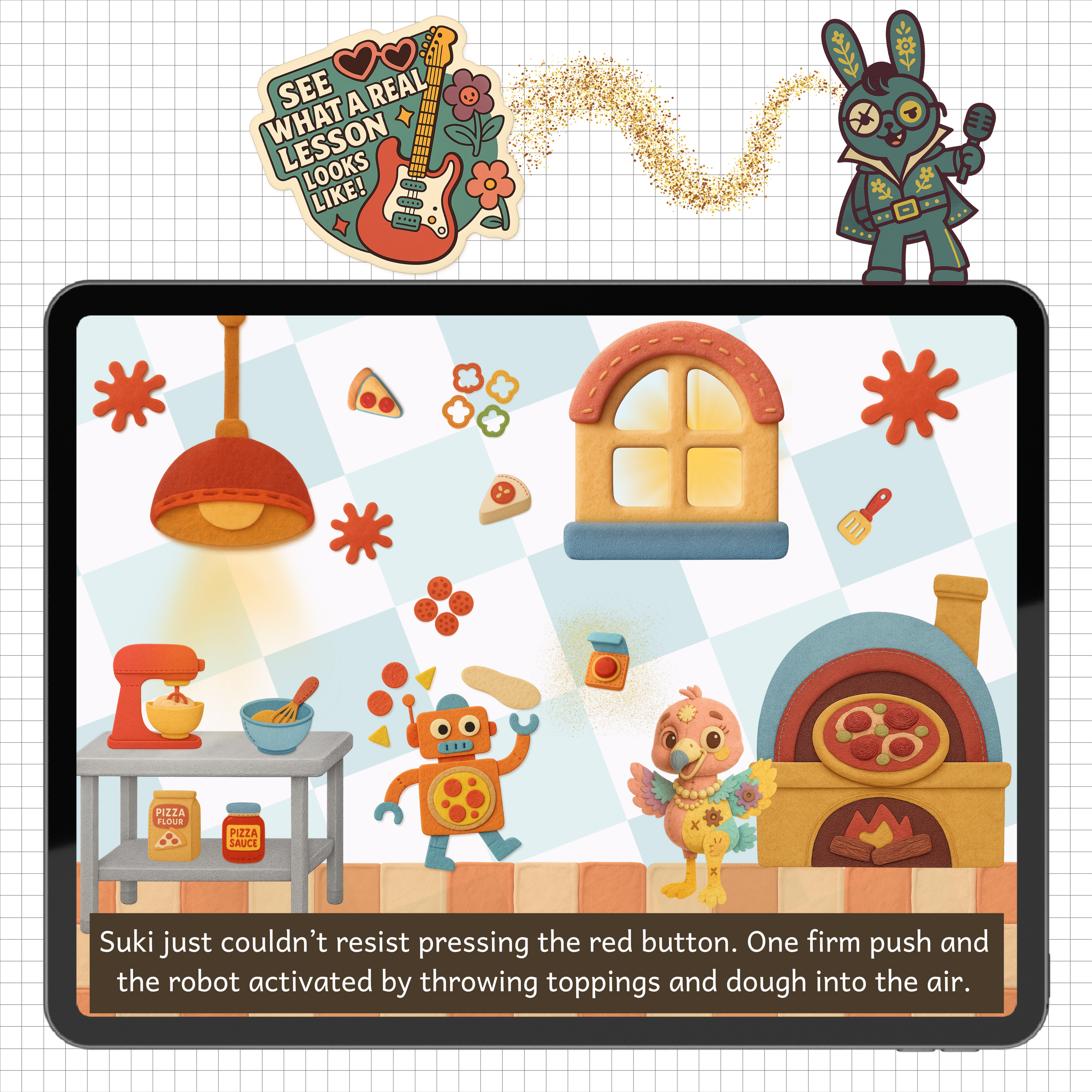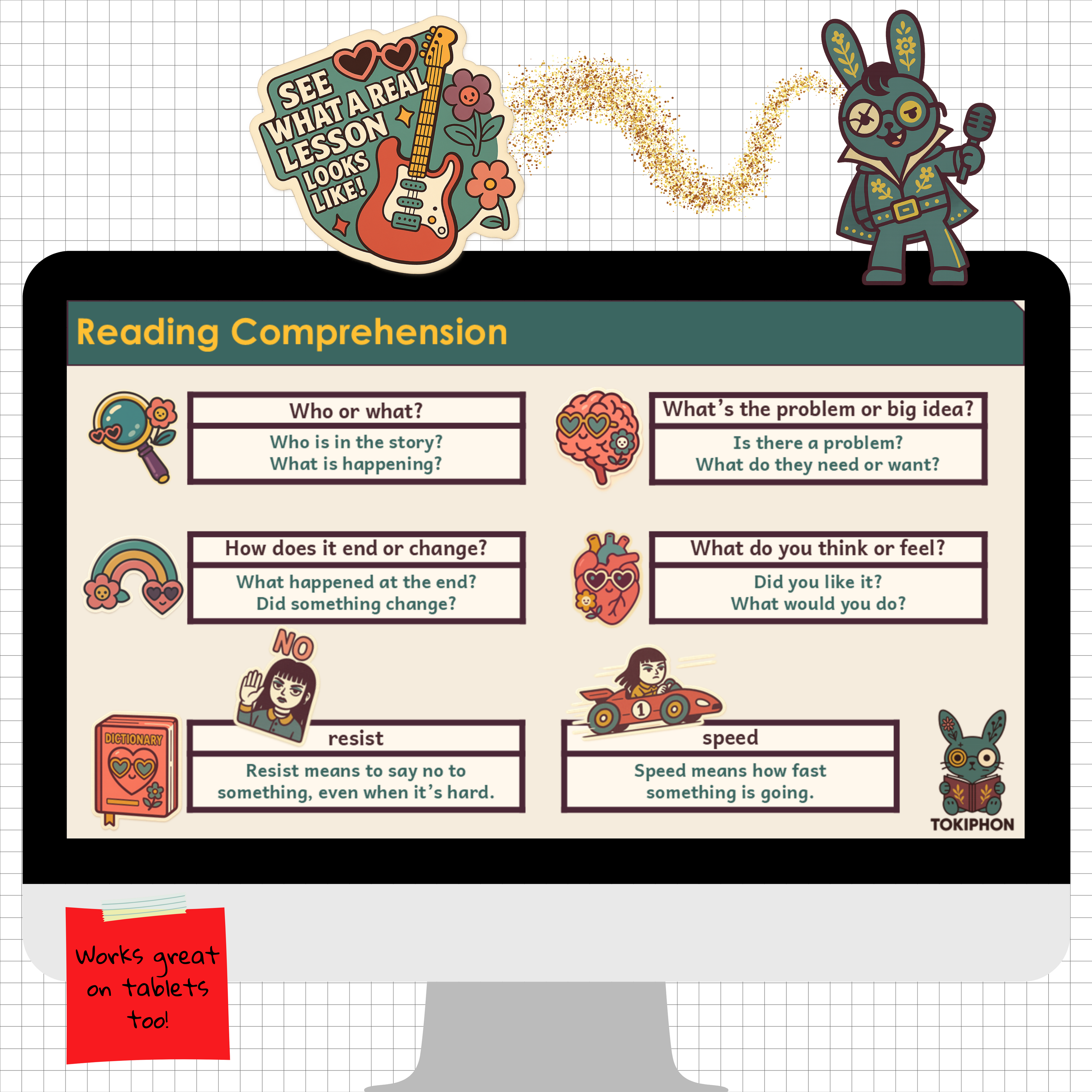Tokiphon Reading Levels.
From letters to fluency, six levels build the path to real reading.
Each level below focuses on a specific stage of the reading journey, from alphabet basics to complex vowel teams, with live instruction, interactive practice, and targeted skill-building.



Level 1
Basic Alphabet Knowledge
Description
Welcome to the land of letters, where every shape has a name and every name has a sound. In this level, students meet all 26 letters and learn to tell them apart by shape, sound, and style. From billboard signs to storybooks, we explore the alphabet in wild fonts and real-world places, three letters at a time.
Student Activities
- Match letters to their sounds using visuals and voice
- Trace uppercase and lowercase letters with careful hands
- Clap out syllables to feel the rhythm of words
- Read silly stories starring the letters of the day
- Learn heart words to remember by sight and feel
- Spell simple words using known letters and sounds
- Play interactive games and earn stickers to stay motivated
Skills Covered
- Recognizing all 26 letters by name and shape
- Connecting letters to their most common sounds
- Knowing vowels from consonants
- Understanding print in many forms and fonts
- Hearing syllables in spoken words
- Beginning to read and recall high-frequency heart words
- Developing fine motor control through tracing
- Building early reading and spelling foundations
- Staying engaged through fun, play, and praise
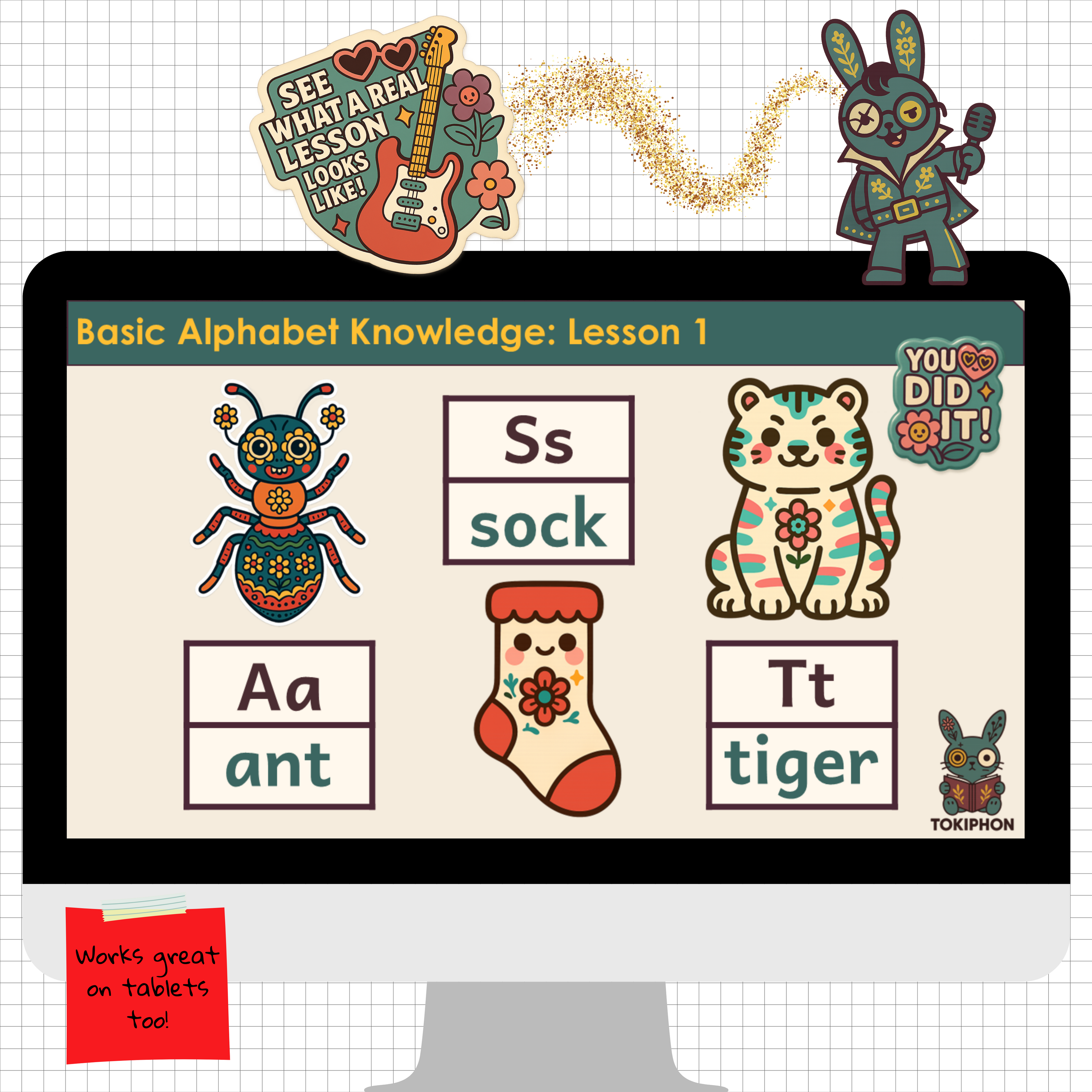
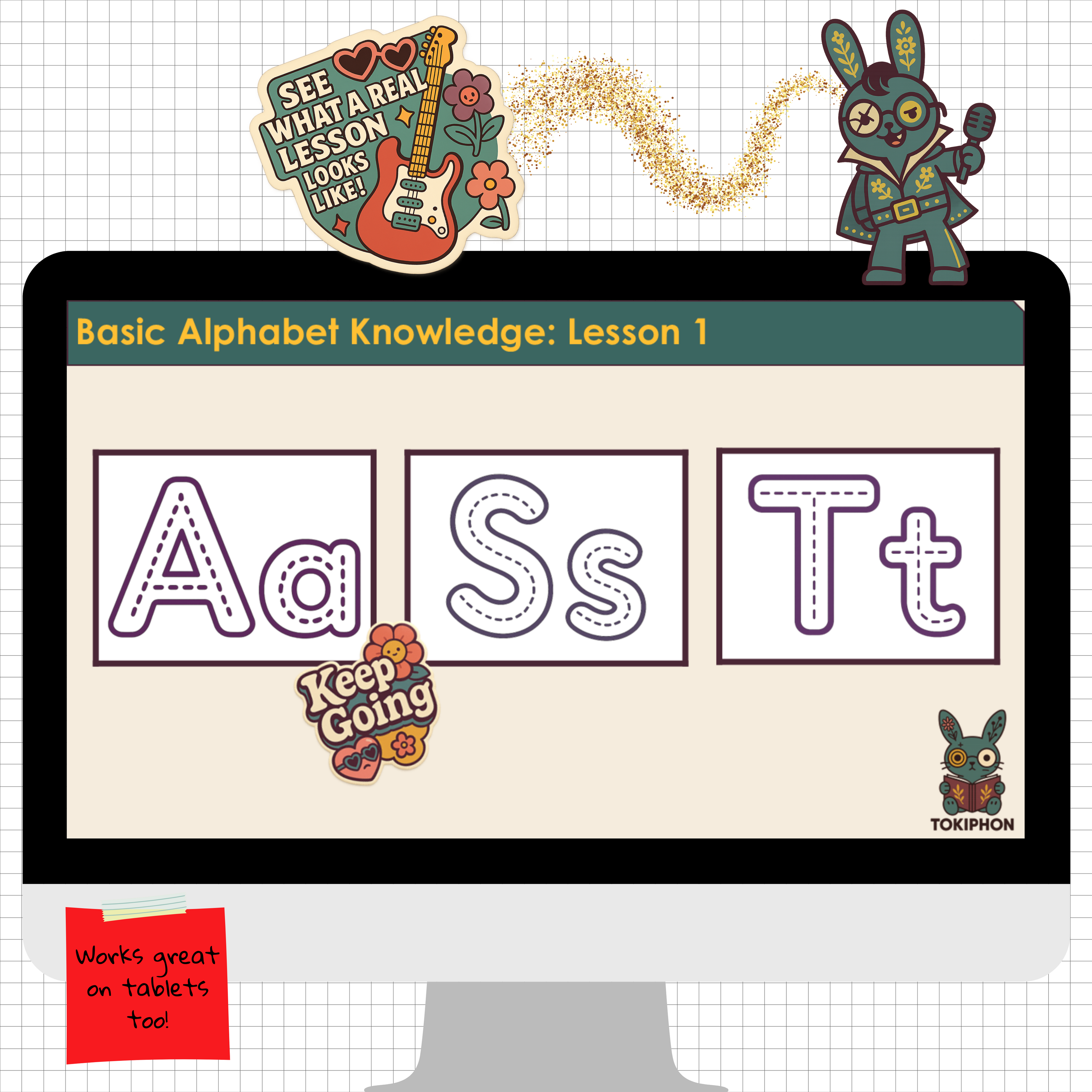
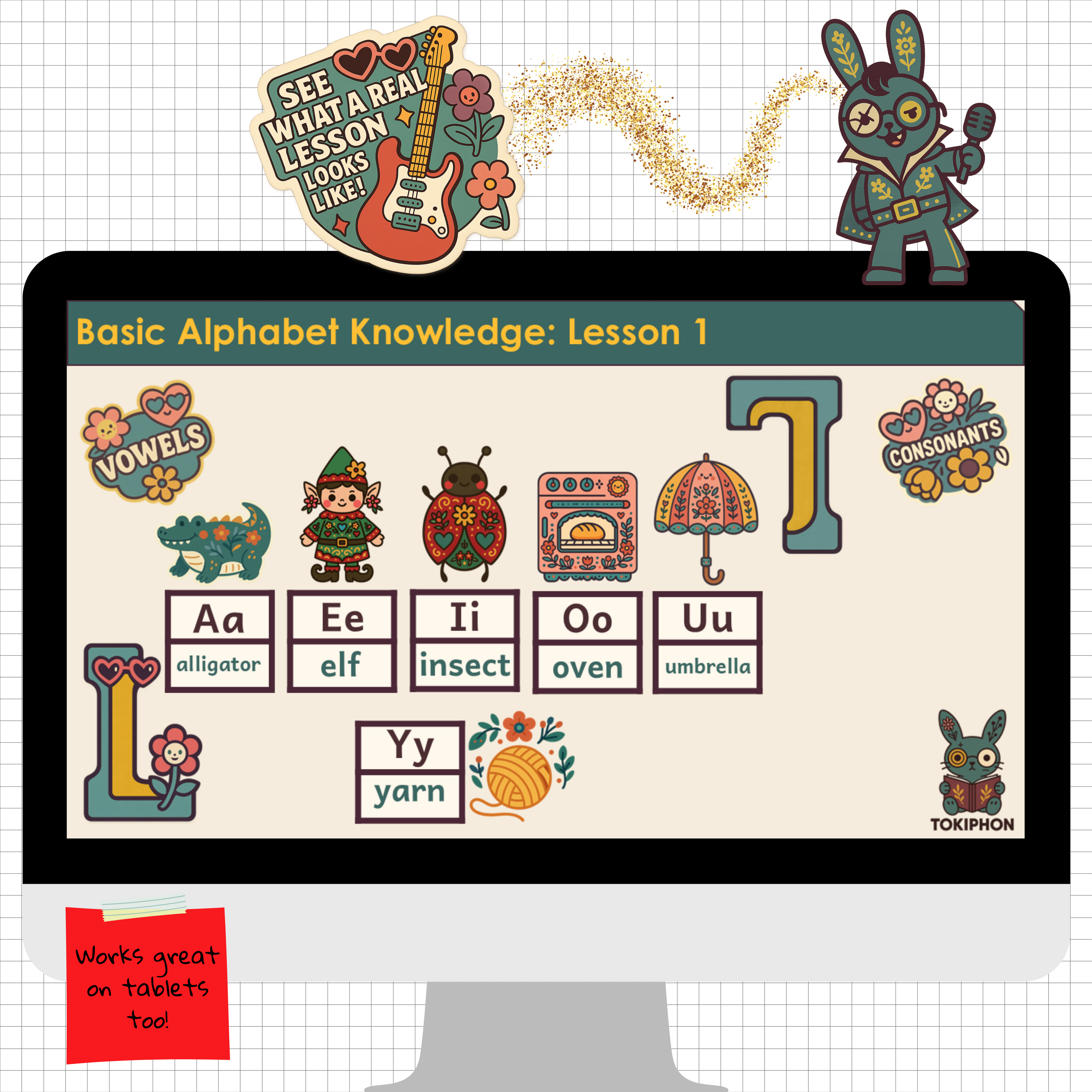
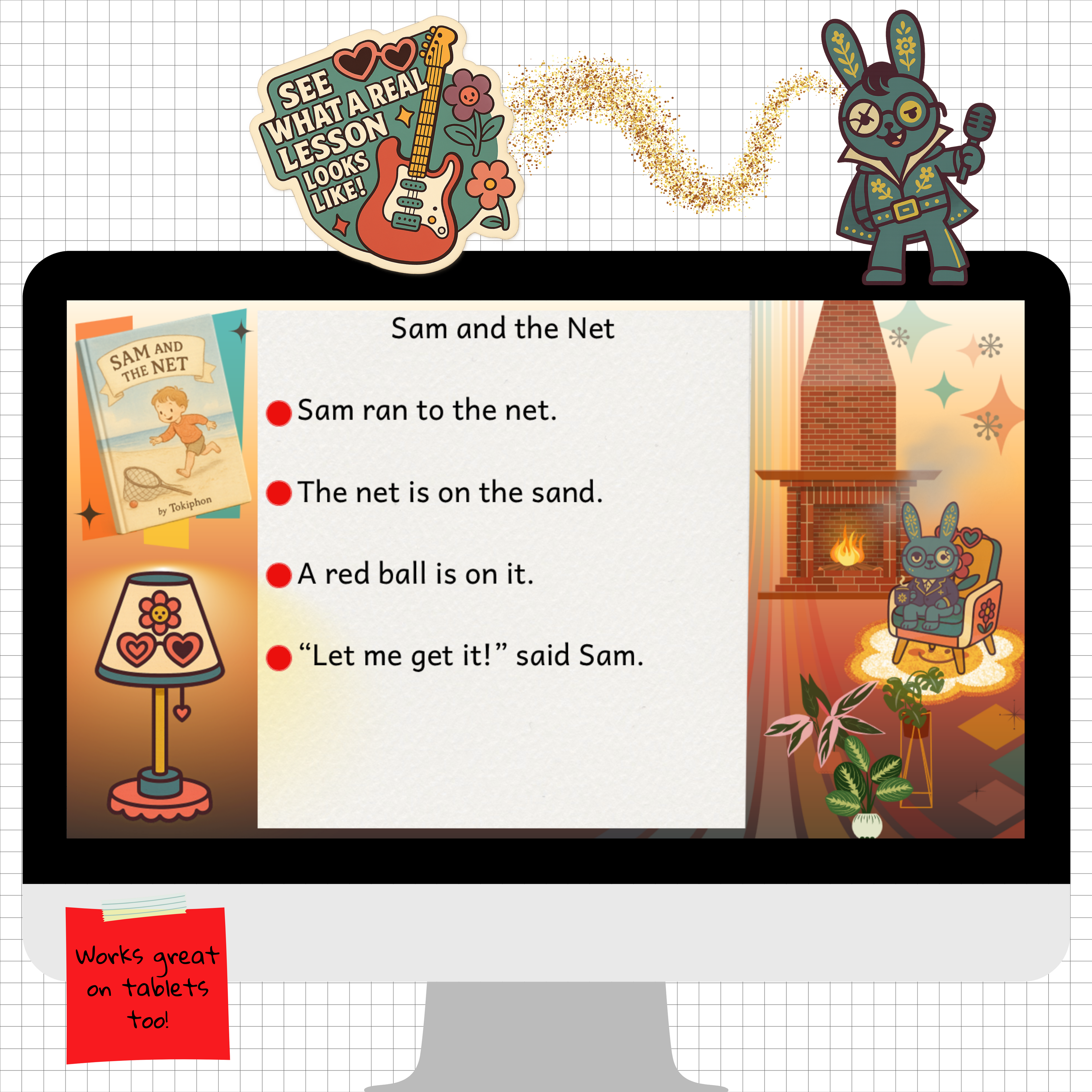
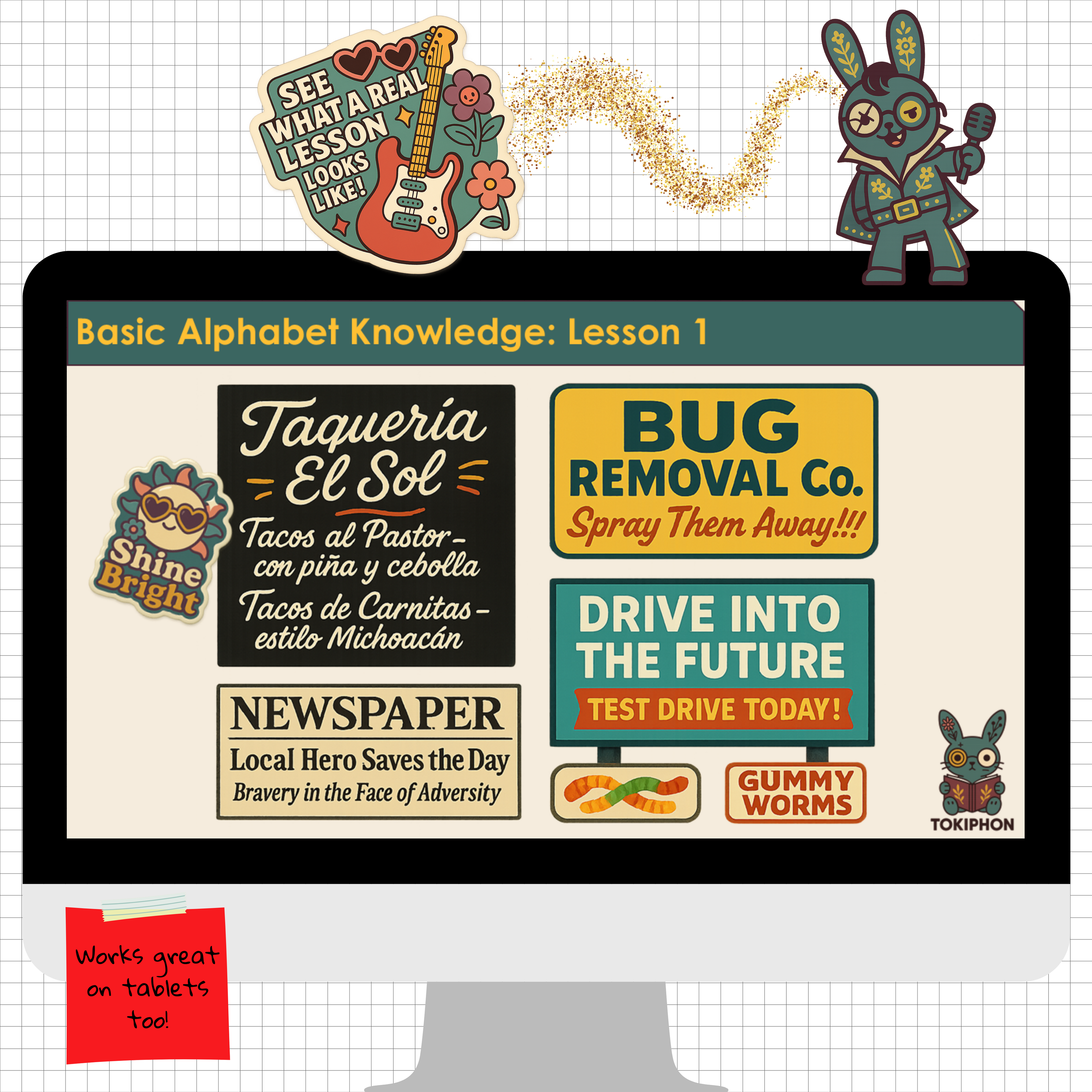
Level 2
Using Letter Sounds & Patterns
Description
This is where real reading power begins. Students use letter sounds and recognize common word patterns to unlock whole new rows of words. Each lesson starts with a quick review, then dives into phonics practice that builds confident, independent readers.
Student Activities
- Segment and blend sounds using Elkonin boxes with CVC words
- Explore common word families like -at, -an, and -ap
- Mark sounds with dots and blend both real and nonsense words
- Read short sentences and stories that use target patterns
- Learn high-frequency heart words for fast recognition
- Spell simple words based on the patterns they know
- Start hearing the difference between short and long vowels
- Play games and track progress with sticker charts
Skills Covered
- Segmenting and blending phonemes
- Recognizing patterns in words (like -it, -op, -ed)
- Reading and spelling simple CVC words
- Identifying short and long vowel sounds
- Using decoding and encoding strategies
- Remembering high-frequency heart words
- Building fluency with simple sentences
- Staying motivated through visual progress tools
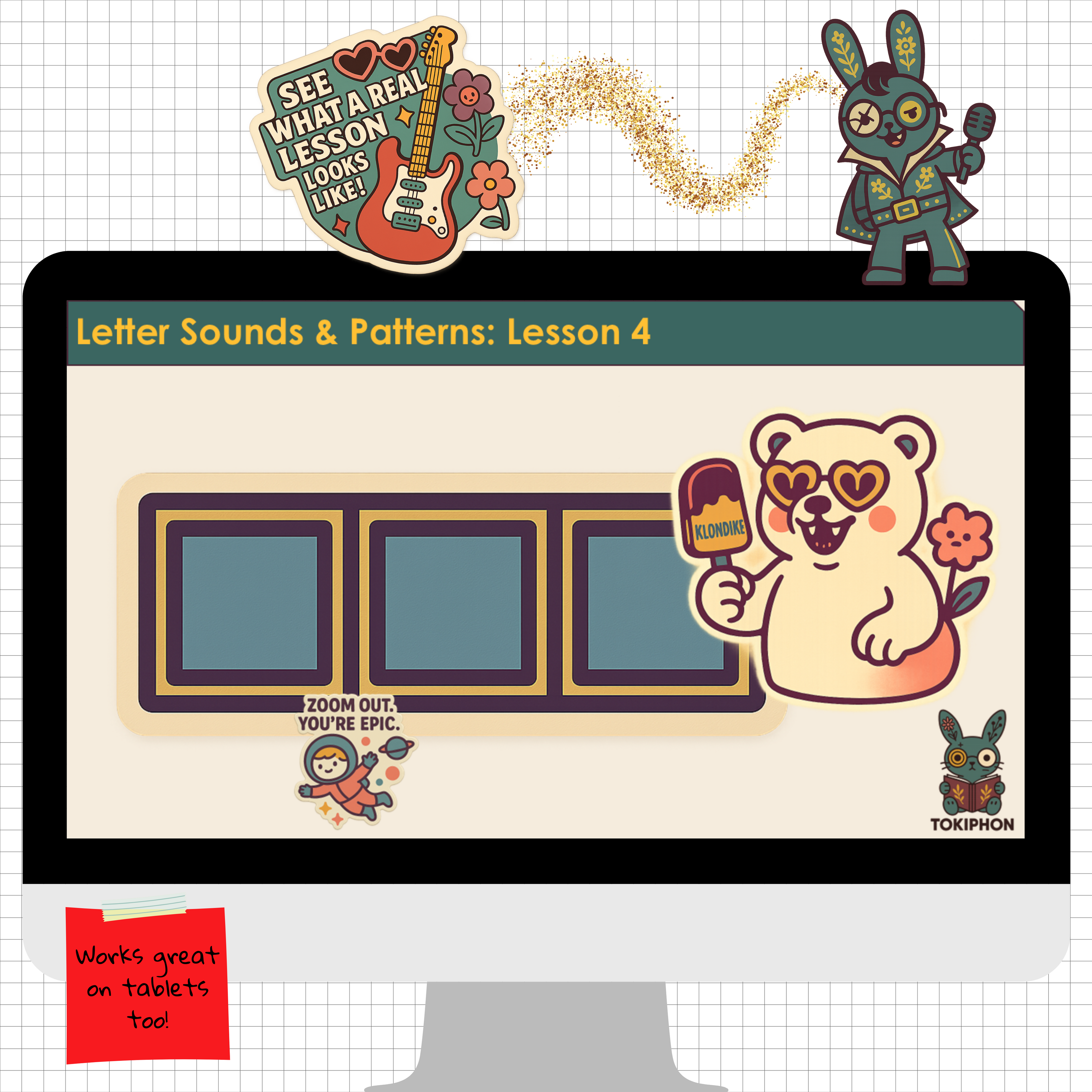
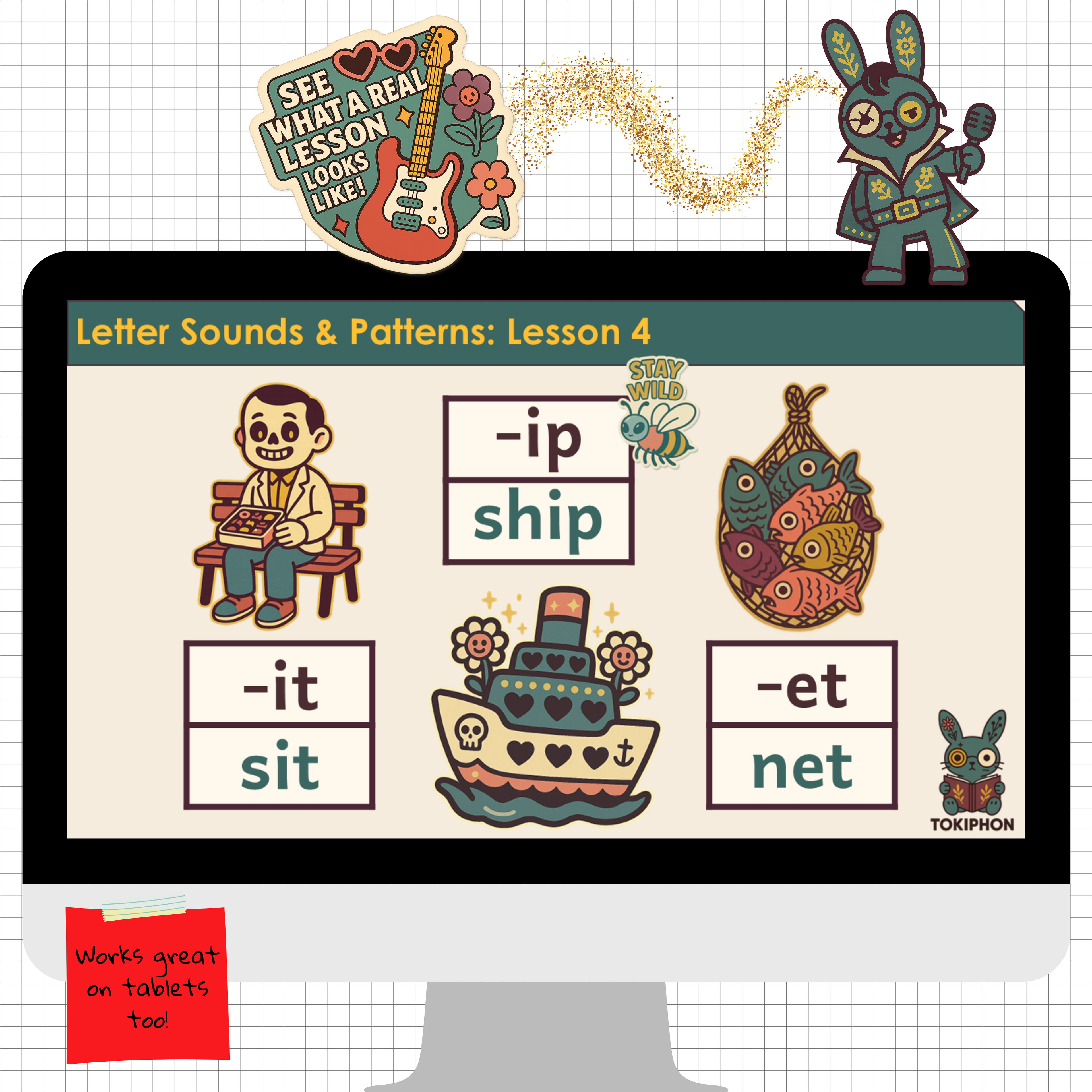
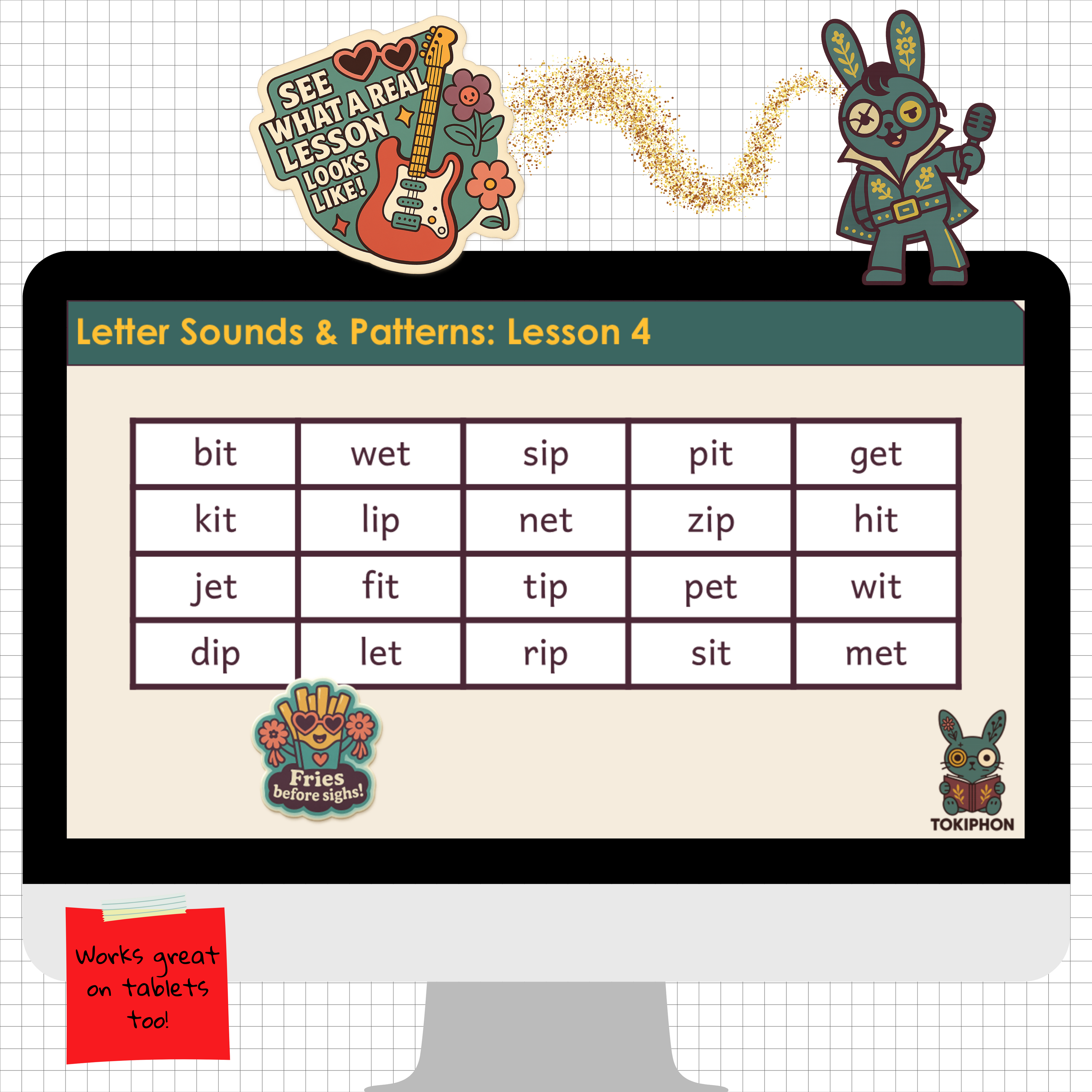
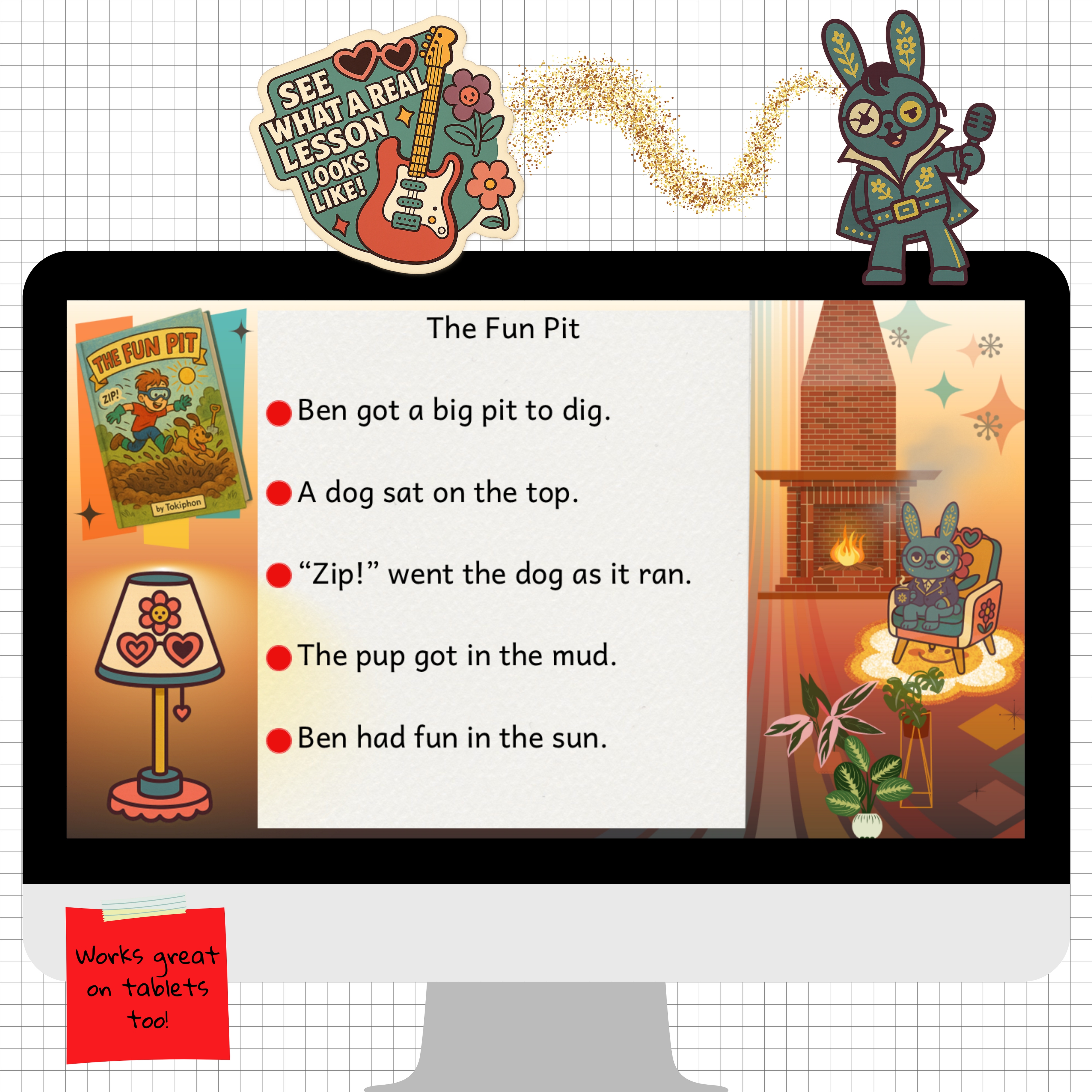
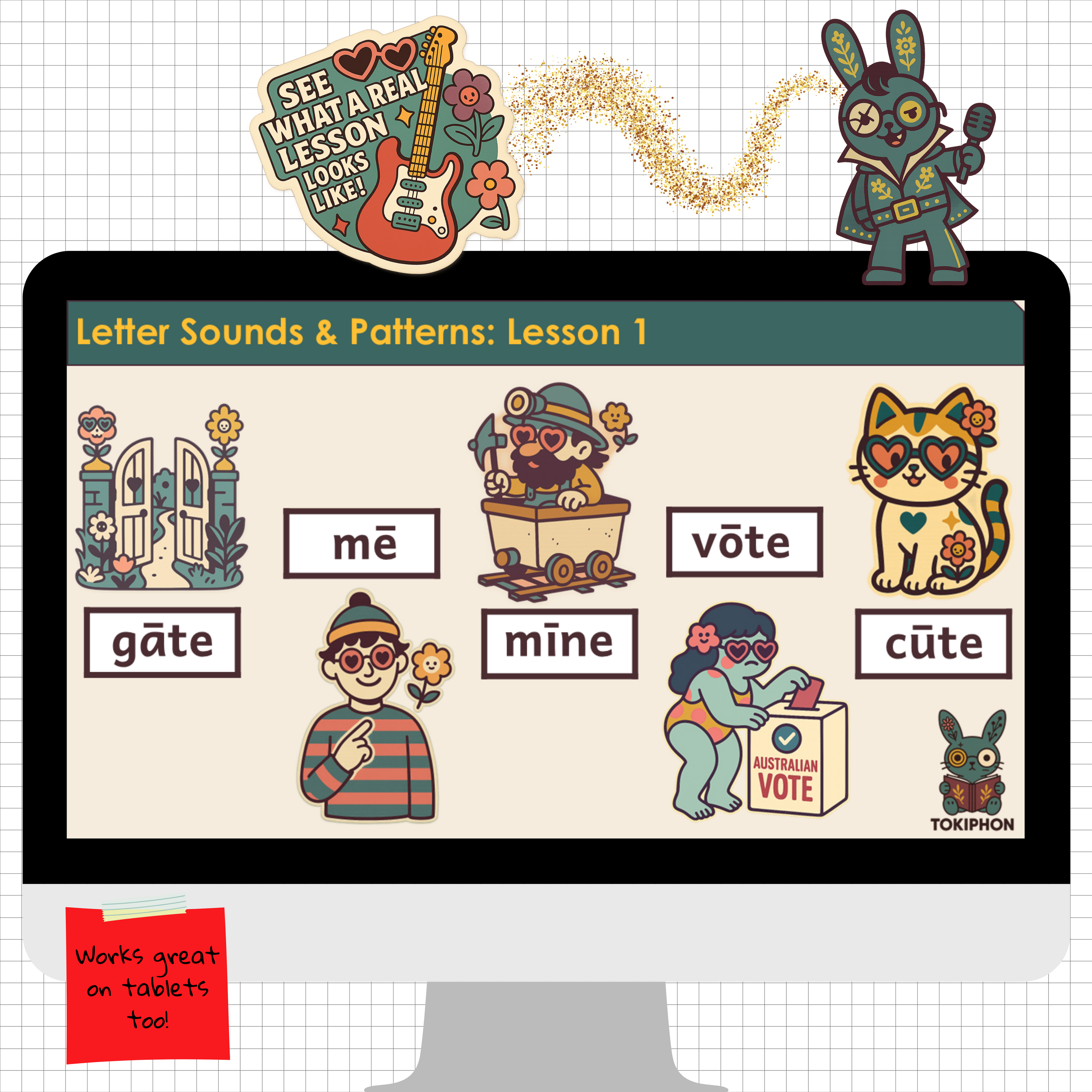
Level 3
Blends & Digraphs
Description
In this level, students sharpen their decoding skills by learning to work with tricky sound pairs. Digraphs make one sound from two letters. Blends are quick bursts of two consonants said together. Through spelling, reading, and listening, students begin to unlock longer words, build confidence, and collaborate as a group. Heart words, compound words, and plenty of sticker-chart cheer keep the momentum going.
Student Activities
- Identify and read common digraphs like sh, ch, and th
- Practice blends like bl, st, and cr in real and nonsense words
- Mark and blend multi-letter words using sound dots
- Read stories packed with the week’s phonics patterns
- Continue learning high-frequency heart words
- Decode compound words like sunset and backpack
- Spell words using blends, digraphs, and familiar sound chunks
- Play decoding games and earn stickers
- Practice classroom habits like listening, trying again, and working together
Skills Covered
- Recognizing and using digraphs and blends
- Decoding 3 to 5 letter words
- Identifying and reading compound words
- Building fluency with longer, more natural sentences
- Mastering high-frequency words
- Spelling with complex sound patterns
- Developing teamwork and focus in an online setting
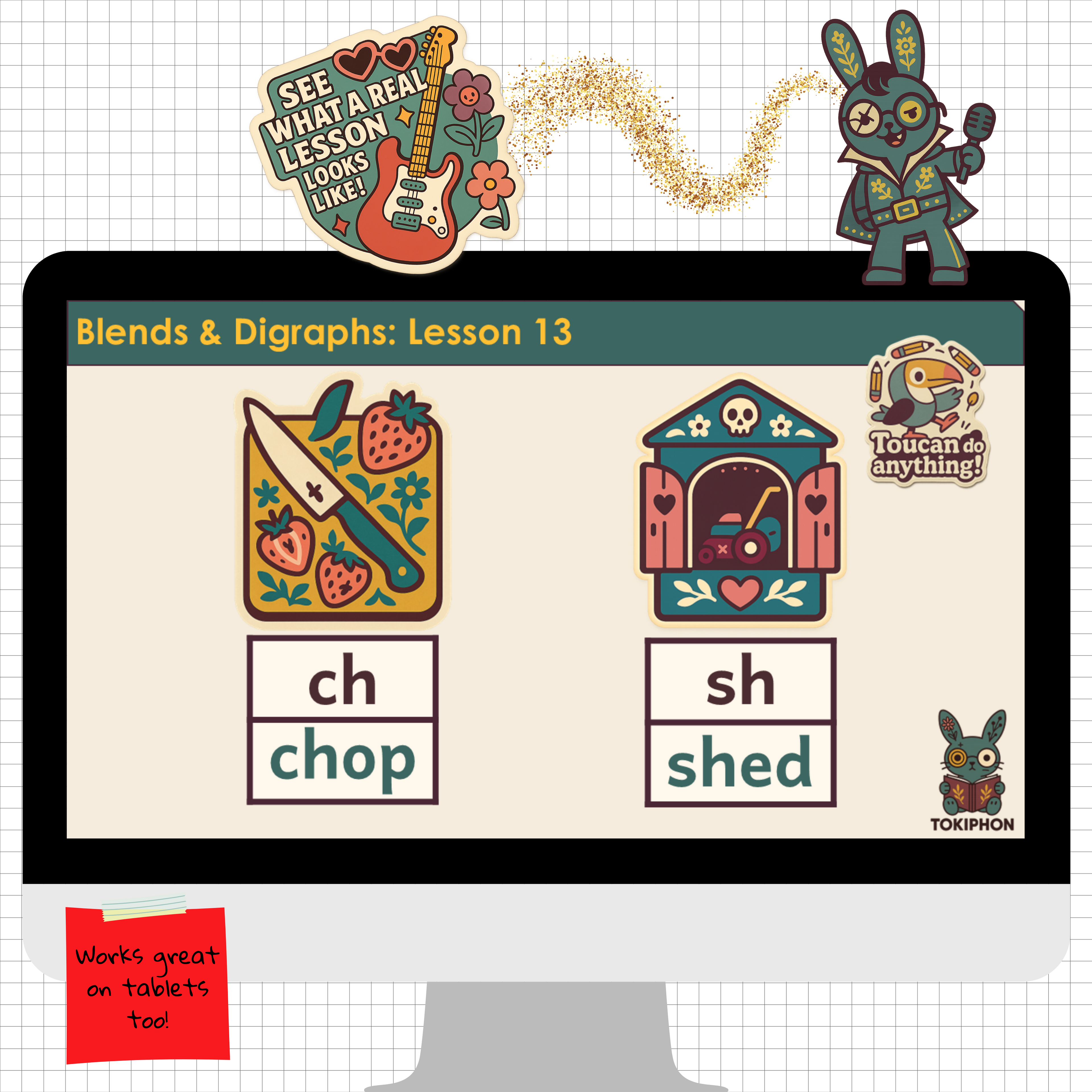
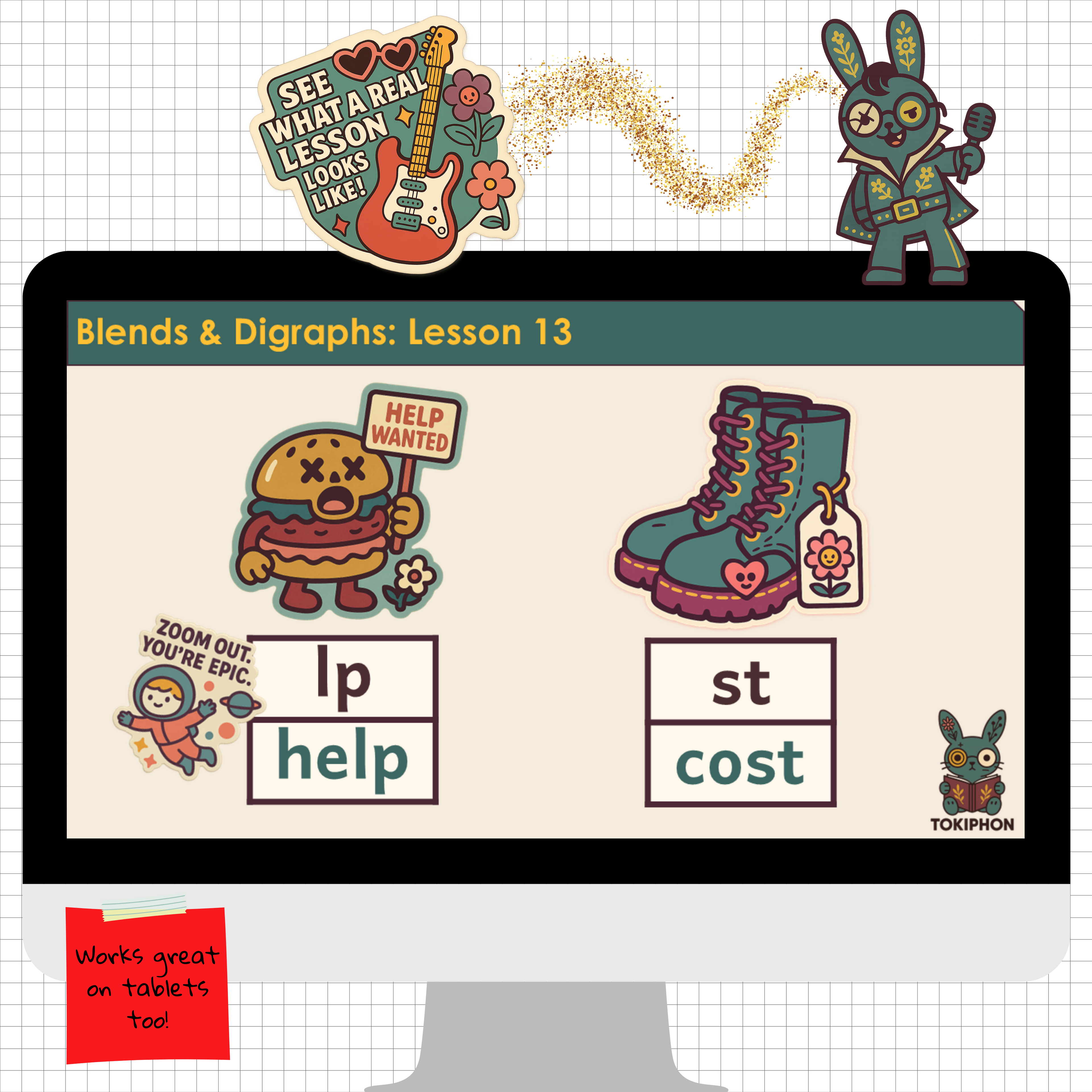
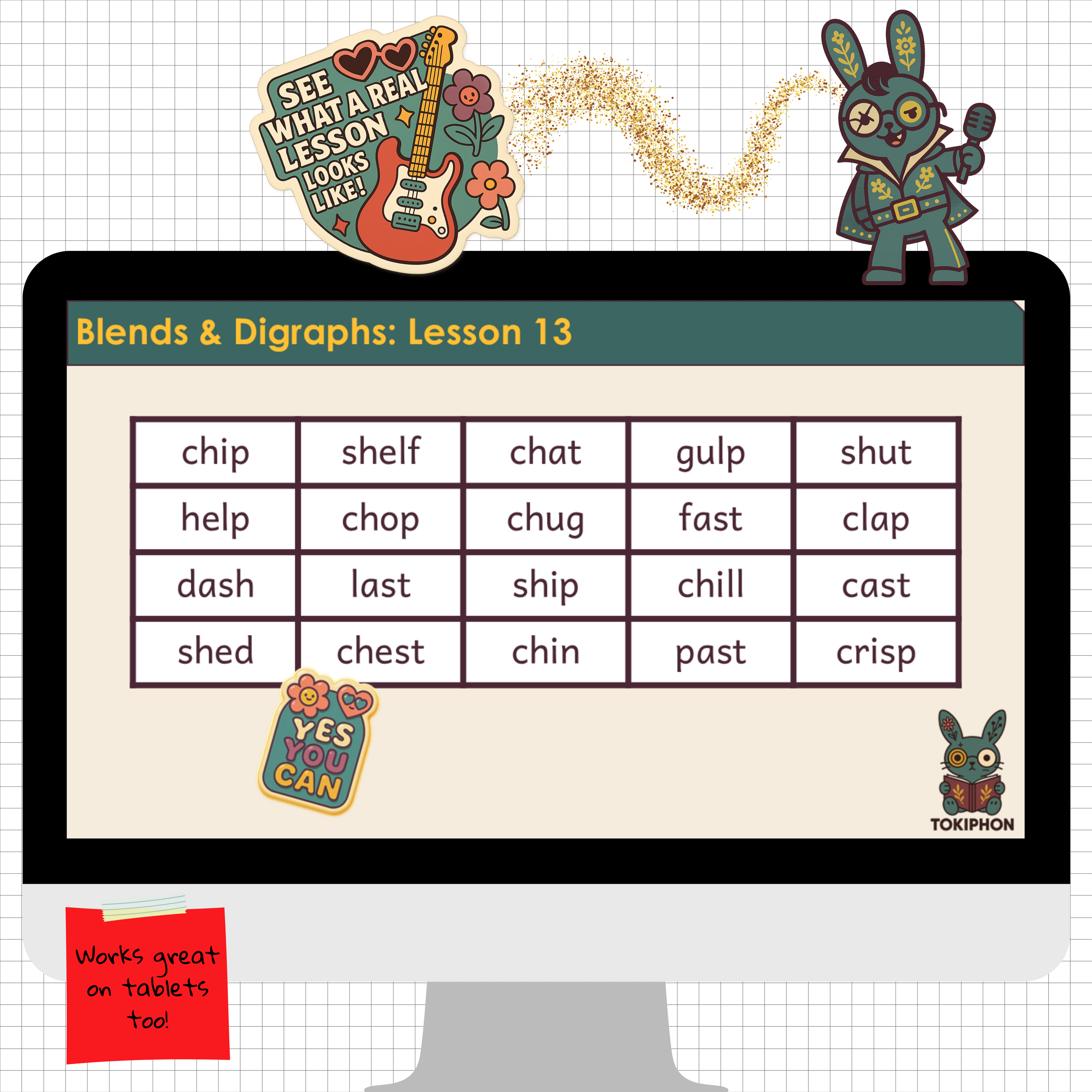
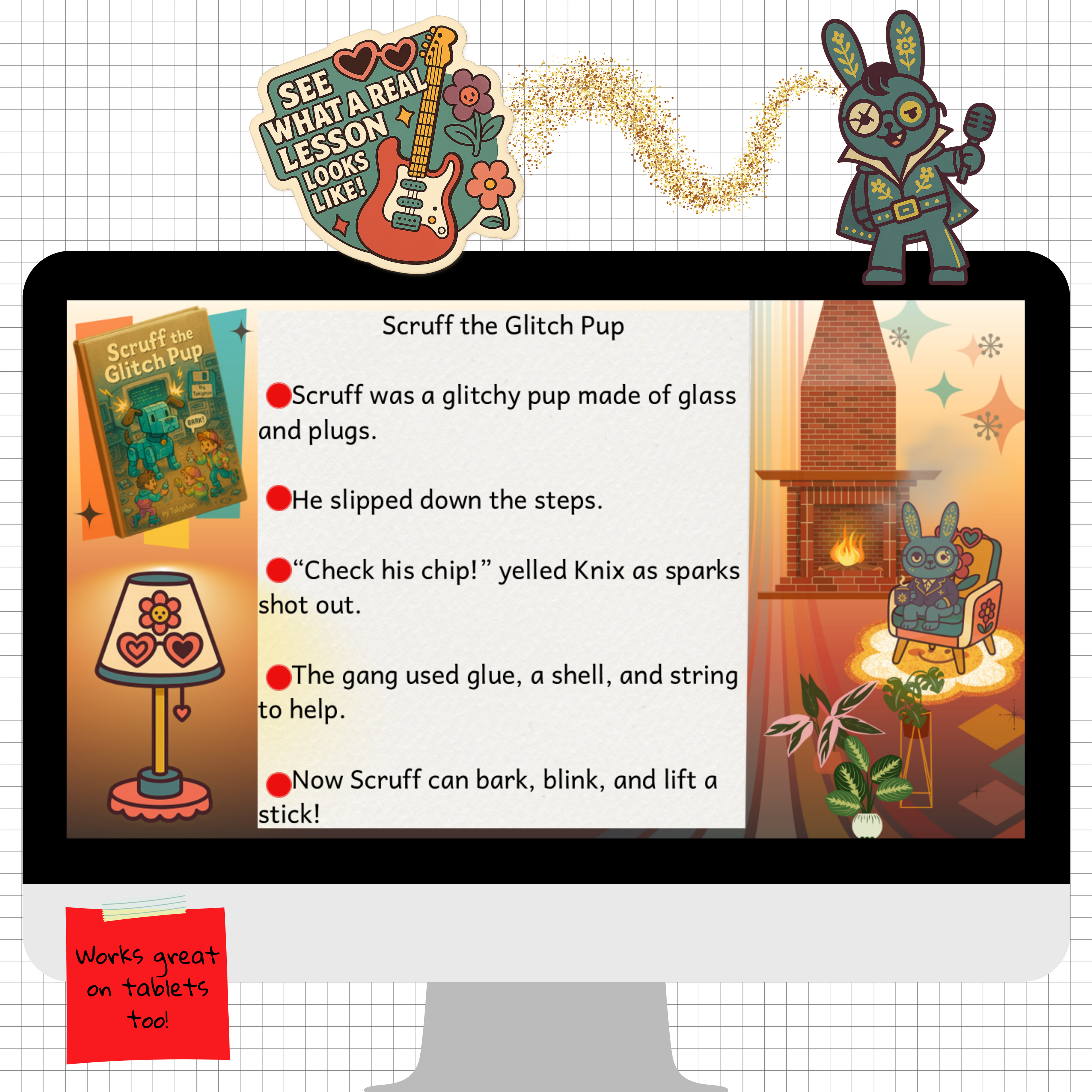
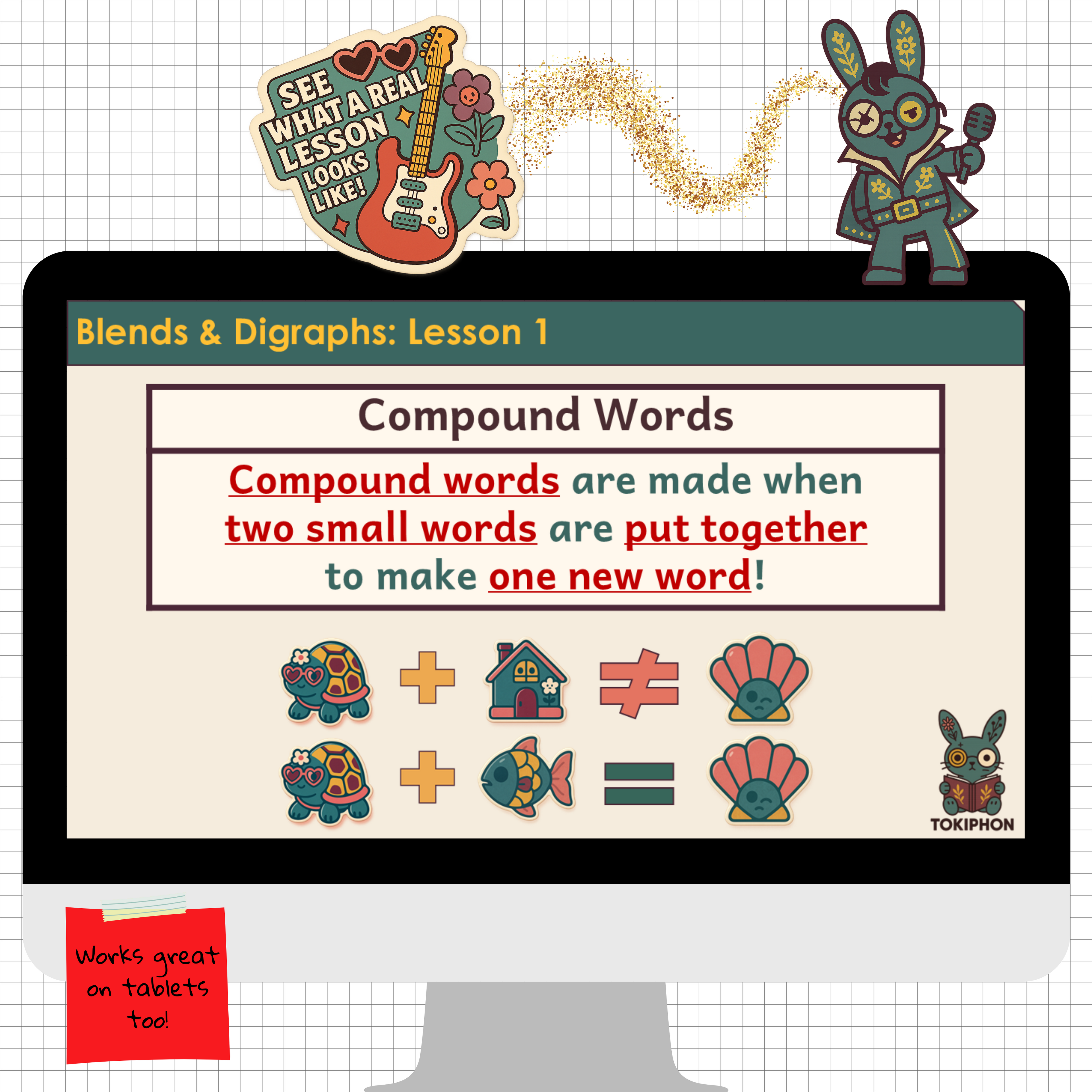
Level 3
R-controlled Vowels
Description
This is where readers stretch their skills and take on the mighty letter R. When R follows a vowel, it changes the sound completely, as in car, fork, and bird. In this level, students master all five R-controlled patterns: AR, OR, ER, IR, and UR. They learn to decode longer words, break syllables, and make sense of big ideas through small sound chunks. With stories, nonsense words, and plenty of movement, we make the tricky stuff stick.
Student Activities
- Identify and read R-controlled vowels: AR, OR, ER, IR, UR
- Blend sounds using visual arcs to connect vowel and R
- Practice decoding real and nonsense R-controlled words
- Read short stories filled with target words
- Learn and apply high-frequency heart words
- Spell words using R-controlled vowel chunks
- Decode multi-syllable words by dividing syllables
- Identify open and closed vowels in longer words
- Play games, earn stickers, and celebrate as a team
Skills Covered
- Recognizing and blending R-controlled vowels
- Decoding multi-syllable words with confidence
- Spelling with advanced vowel patterns
- Identifying syllables and vowel types (open and closed)
- Building fluency through natural reading passages
- Mastering high-frequency heart words
- Sustaining motivation through group games and visible progress
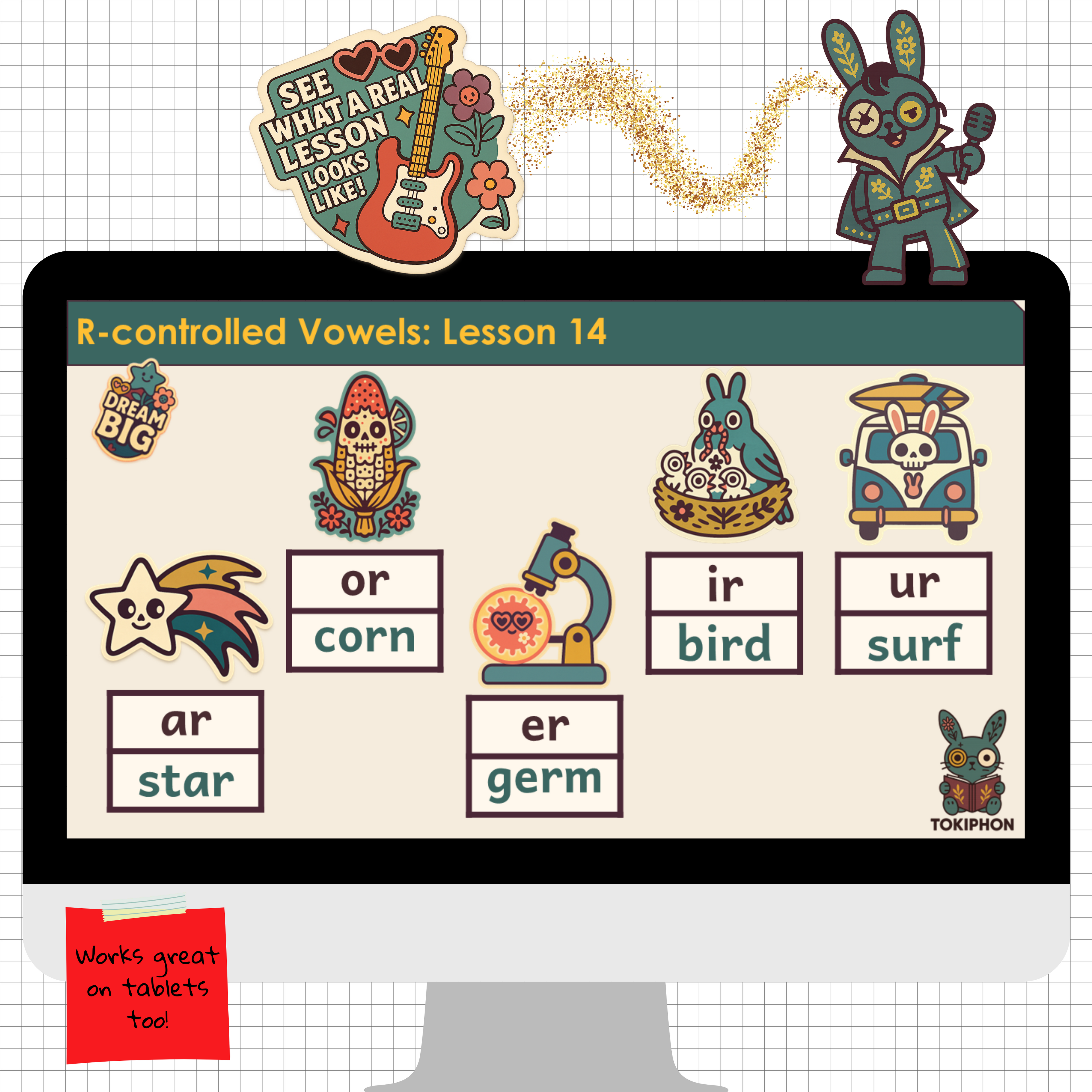
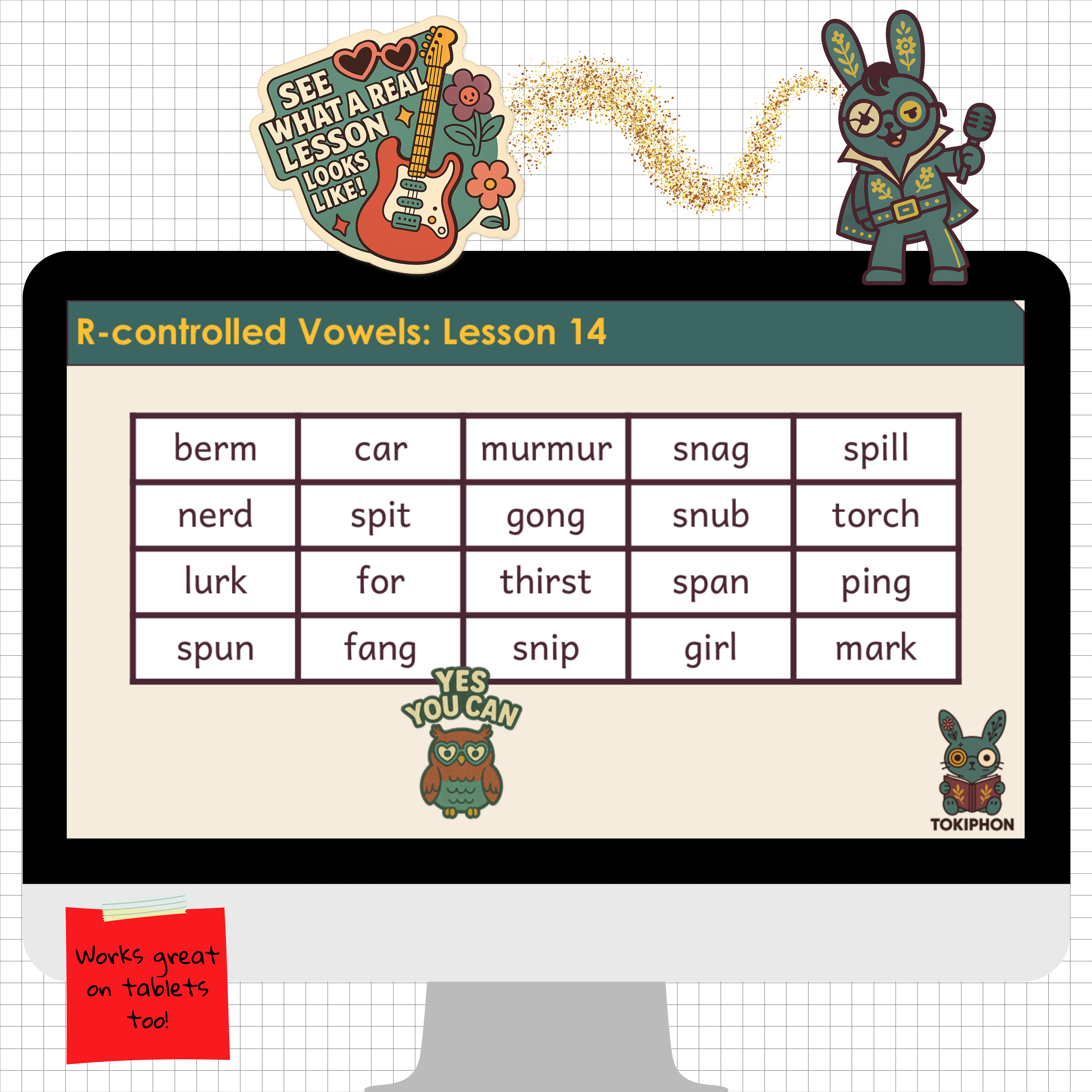
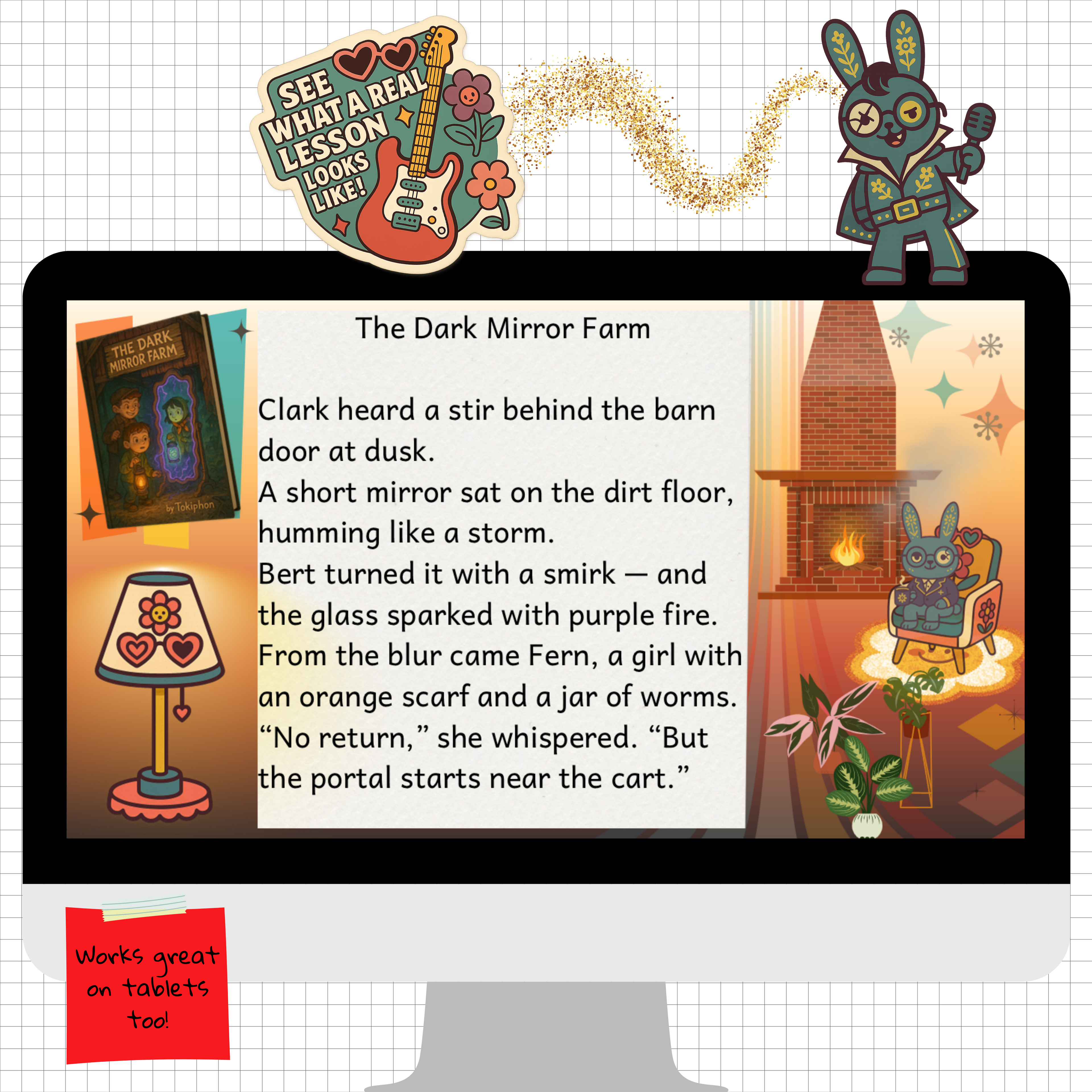
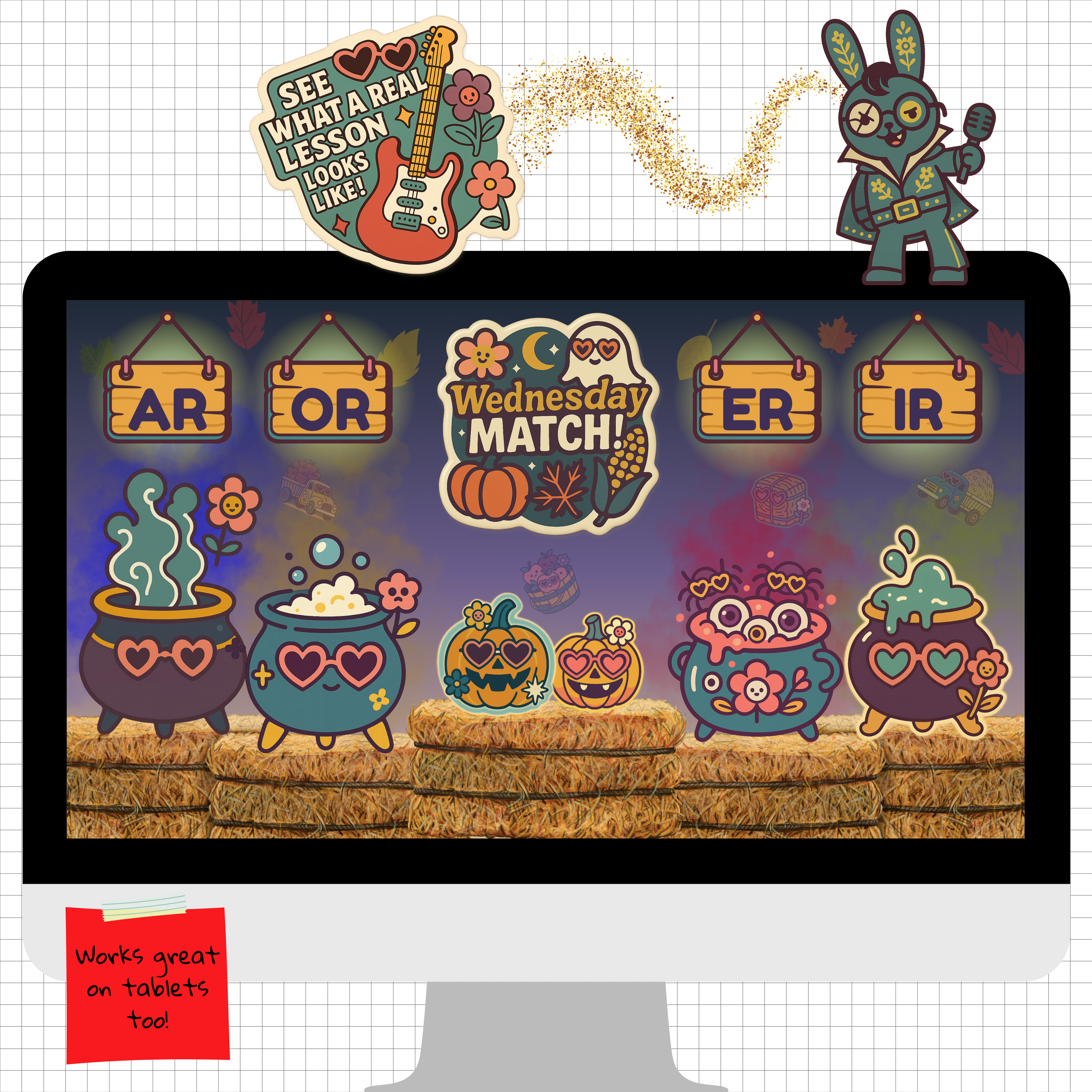
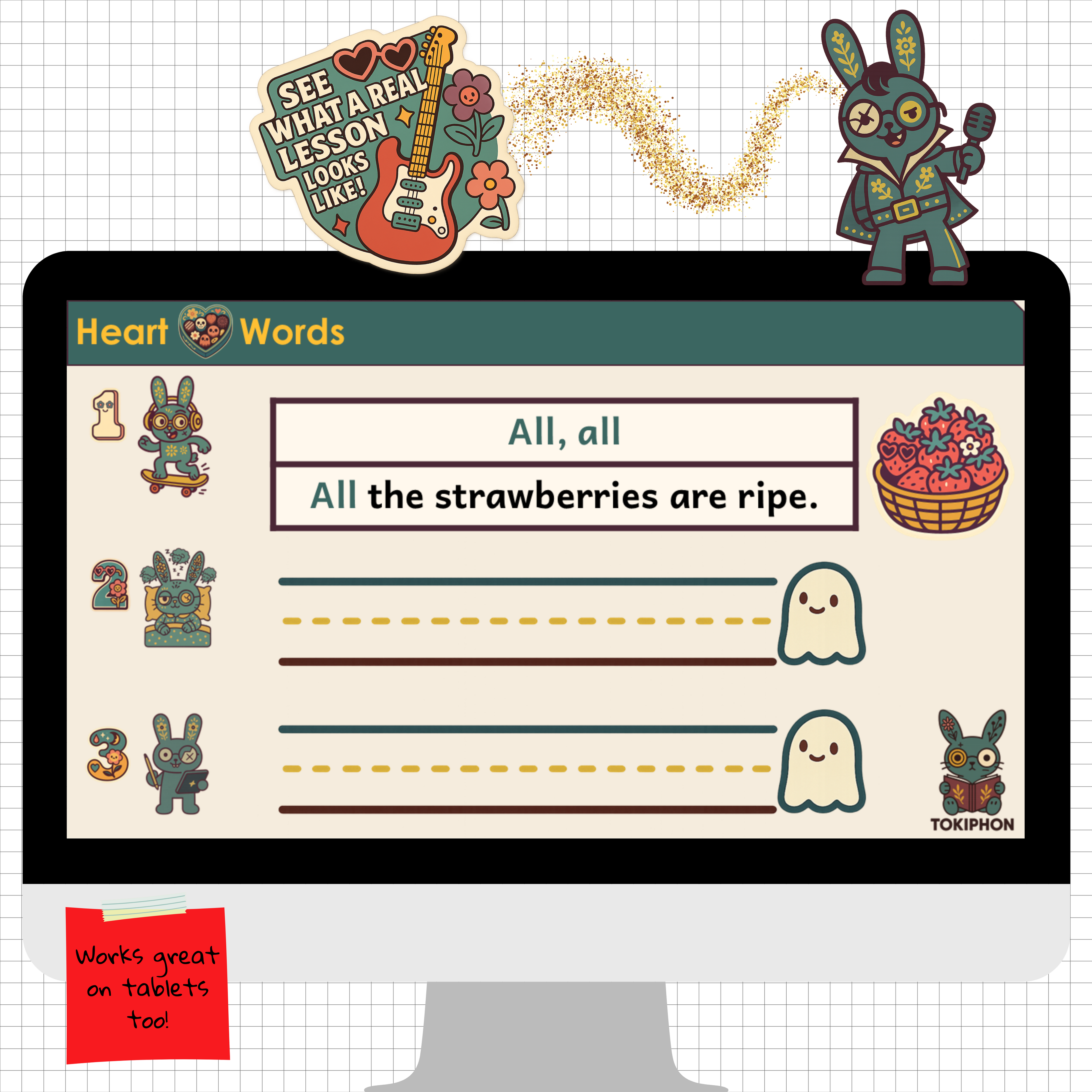
Level 5
Vowel Consonant E
Description
This level introduces the Vowel-Consonant-E pattern, where a silent E at the end of a word gives the vowel a long sound. Students learn the difference between short vowels like in cap and long vowels like in cape, using sorting, stories, and visual tools to build fluency. Each lesson focuses on decoding, mental word sorting, and pattern recognition, with silly words, heart word review, and celebratory sticker charts to keep the joy alive.
Student Activities
- Understand how the VCe pattern creates long vowel sounds
- Identify and sort short versus long vowels in spoken and written words
- Read and sort pairs like cap and cape, kit and kite
- Decode VCe words by marking V–C–E, crossing out the E, and tracking the long vowel
- Read silly sentences using heart words and VCe patterns
- Practice spelling both short and long vowel words
- Apply earlier rules like syllable splitting and R-controlled vowels
- Reinforce learning with games, stories, and sticker charts
Skills Covered
- Recognizing short and long vowel sounds
- Understanding and decoding VCe spelling patterns
- Mentally sorting and processing visual word types
- Marking up words with vowel-consonant-e structure
- Combining multiple decoding strategies in real texts
- Reading and spelling high-frequency heart words
- Building confidence and fluency through practice and play
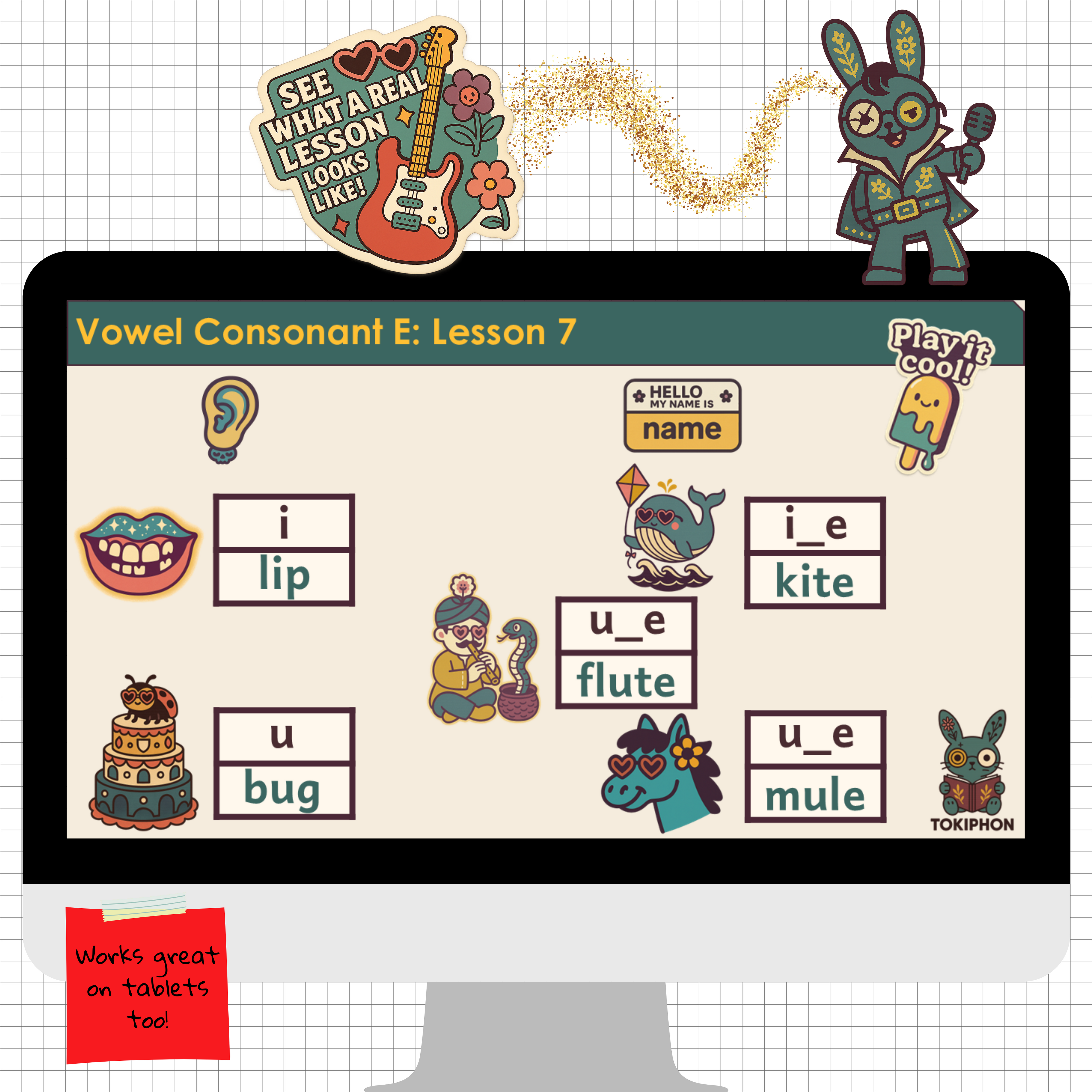
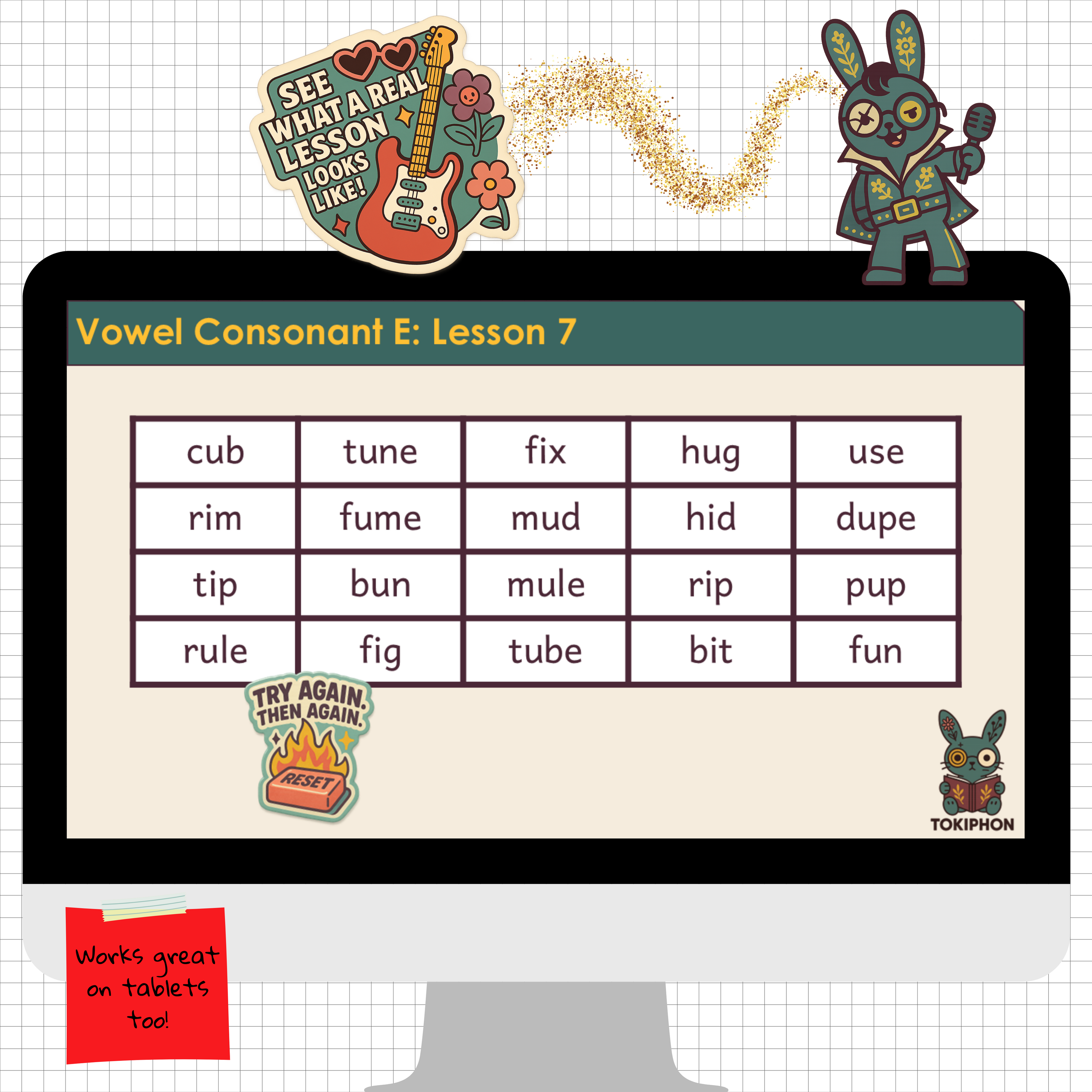
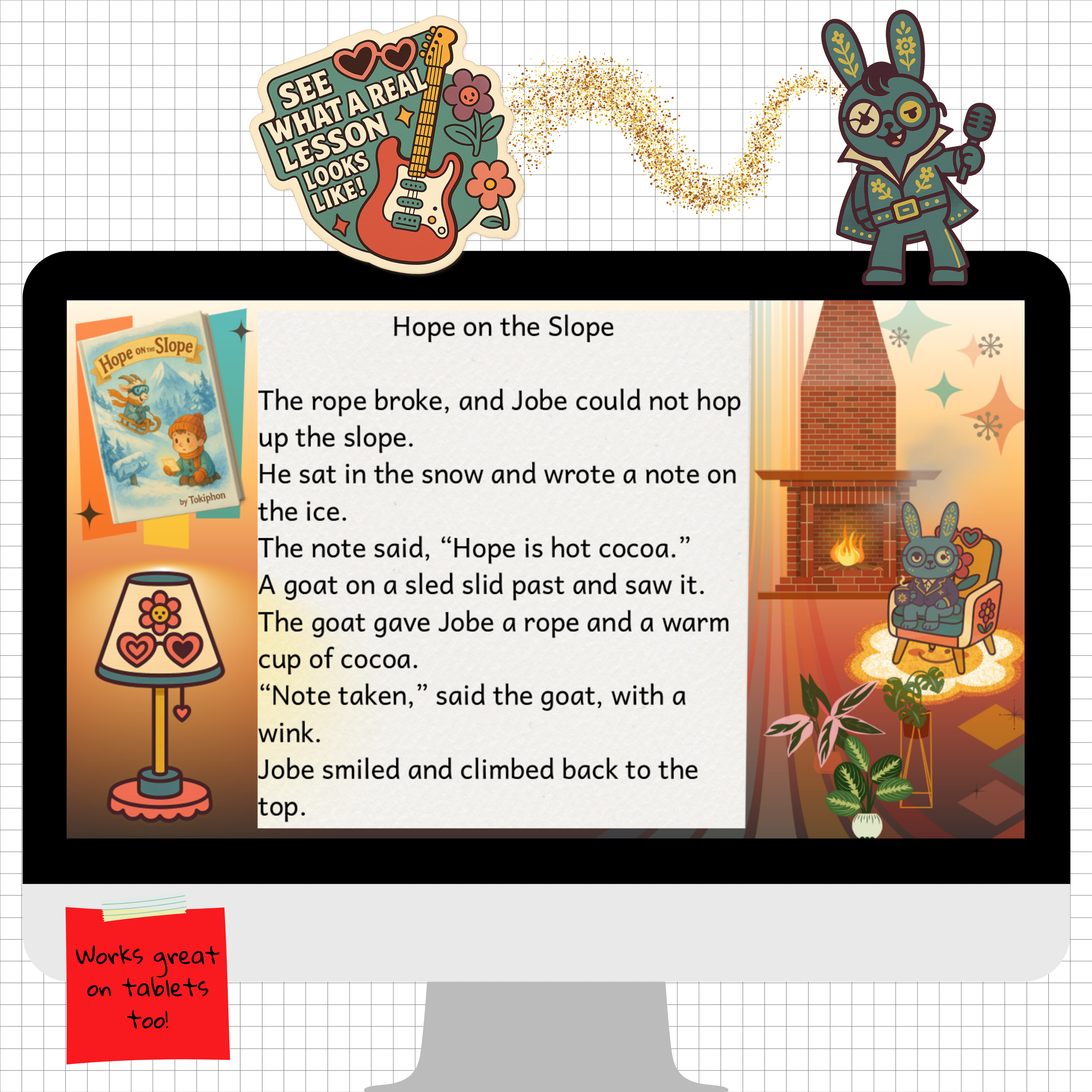
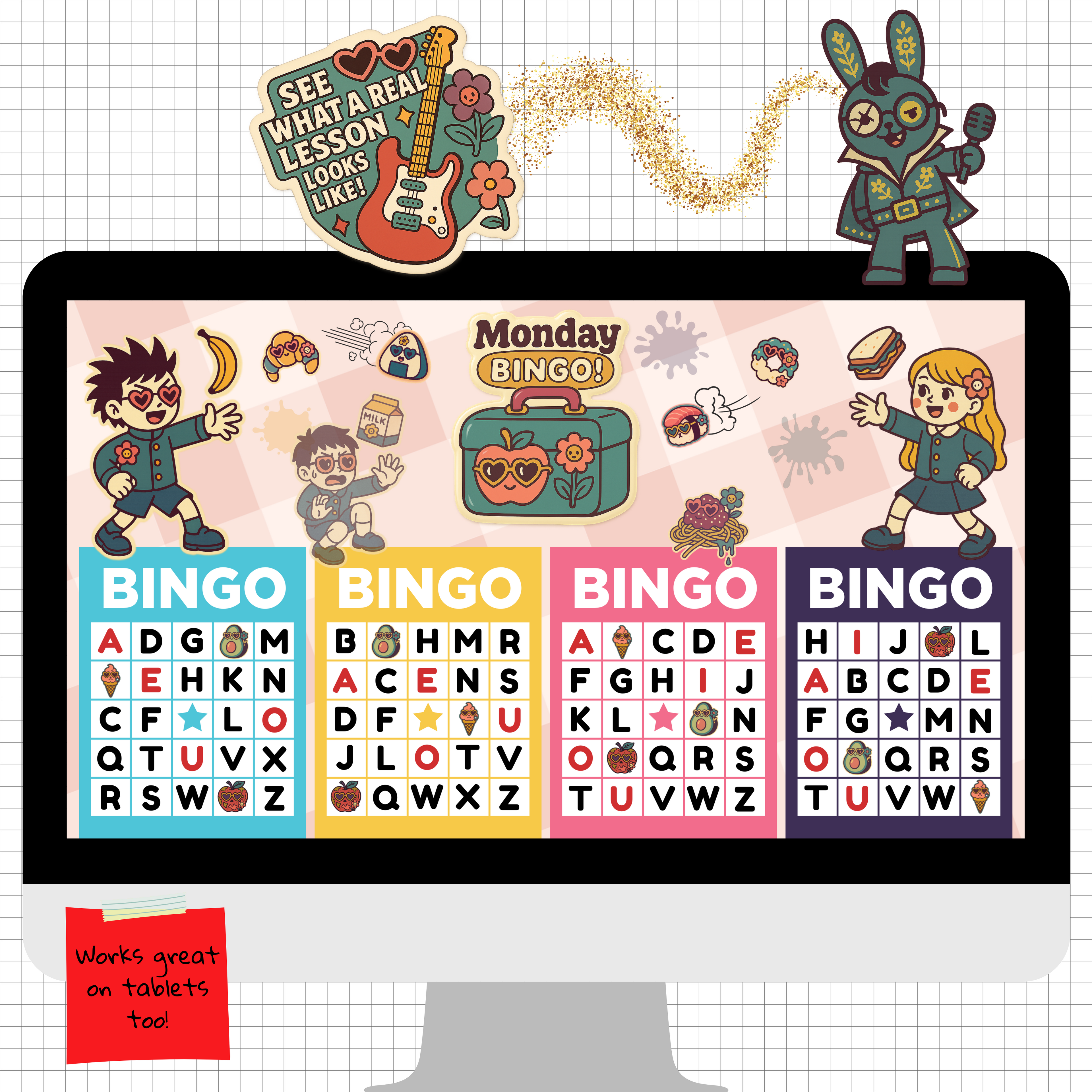
Level 6
Vowel Teams
Description
This final level unlocks the power of vowel teams. These are pairs of letters that work together to make a single vowel sound, like ai in paint or ee in feet. Students explore how these patterns appear in longer words using visual strategies and sound anchors to build fluency and confidence. With silly sentences, themed stories, and spelling practice, students bring all their skills together for real-world reading.
Student Activities
- Identify and read common vowel teams like ai, ee, oa, and igh
- Match unfamiliar words to known anchor words to reinforce sound patterns
- Read nonsense sentences using vowel team words
- Learn and review high-frequency heart words
- Read short stories focused on vowel team use
- Spell words that include the target vowel teams
- Underline vowel teams and mark other phonics features in complex words
- Decode multisyllabic words by breaking syllables and spotting affixes
- Build vocabulary with prefixes and suffixes
- Stay motivated through games and sticker charts
Skills Covered
- Recognizing and decoding vowel teams
- Matching vowel sounds across different word patterns
- Decoding multisyllabic words
- Identifying prefixes and suffixes
- Applying previously learned decoding rules
- Marking complex word structures visually
- Building reading fluency through patterned stories
- Staying engaged through game-based reinforcement
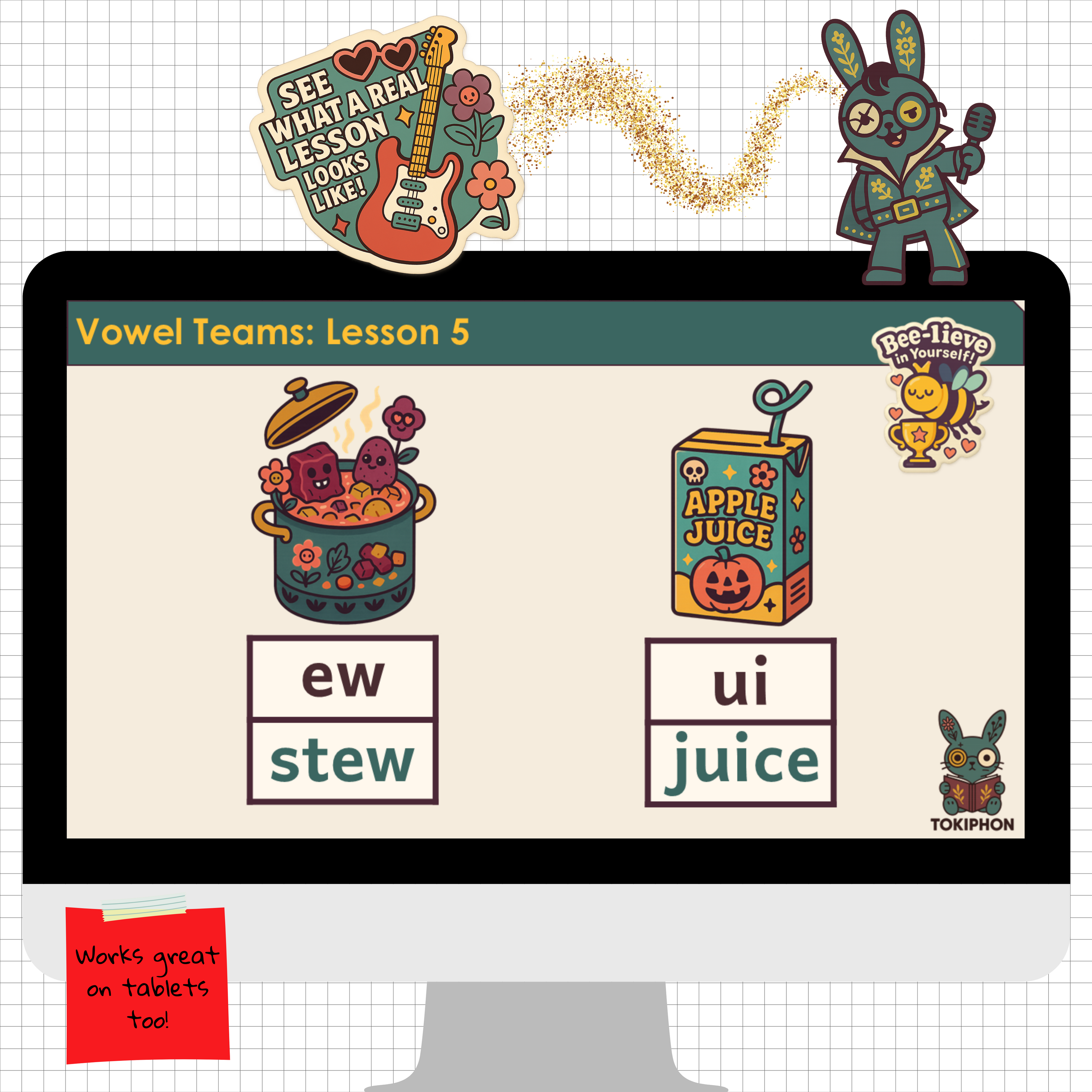
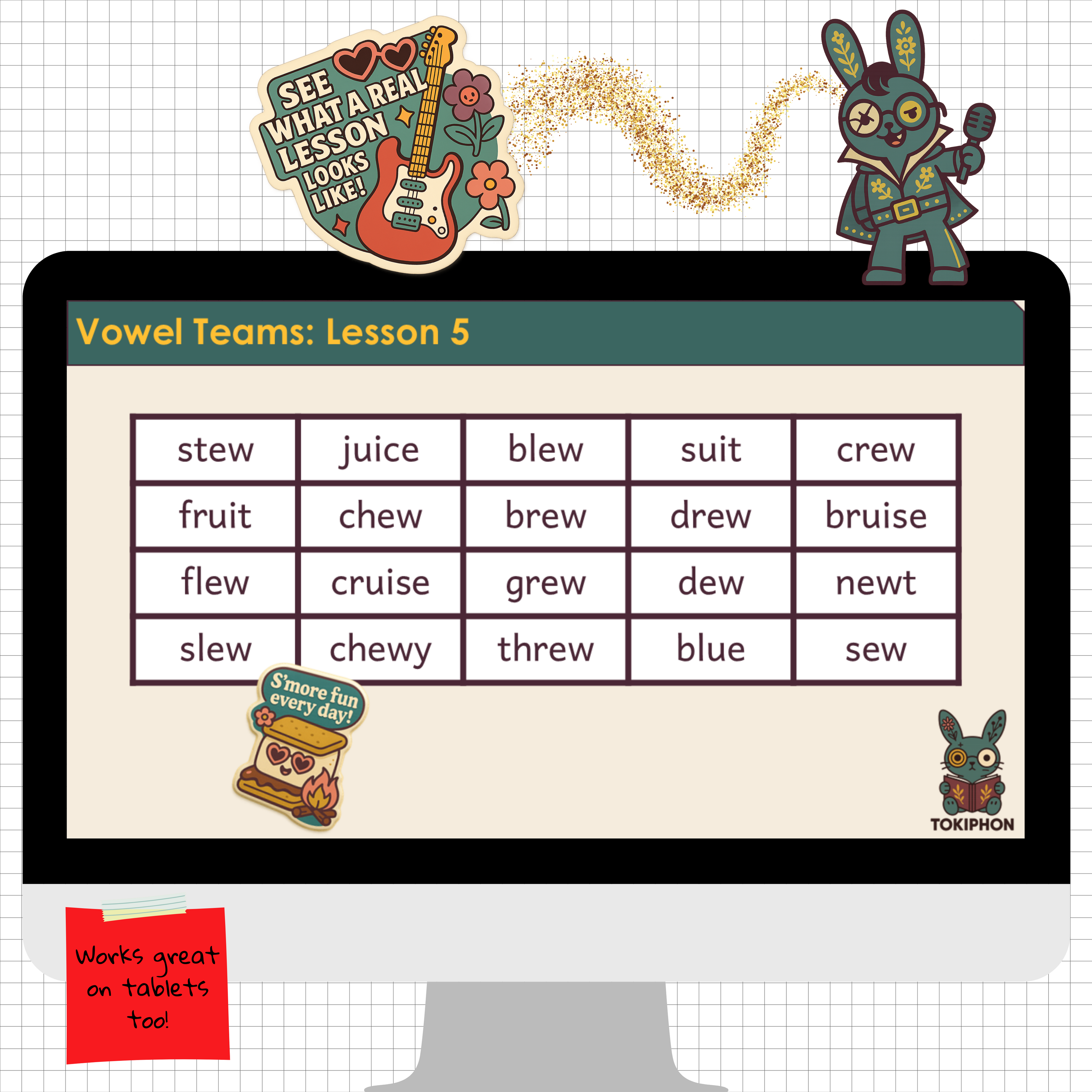
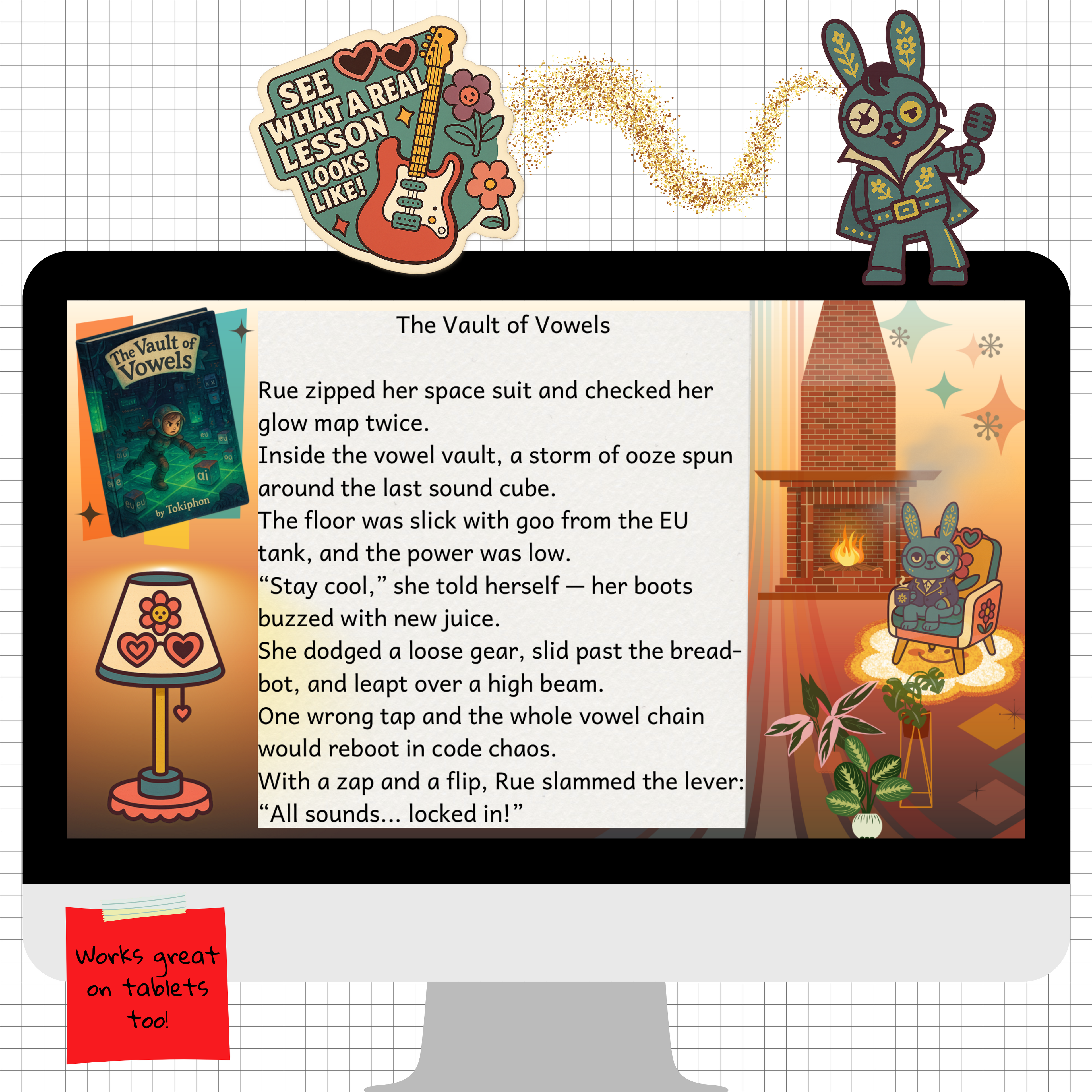
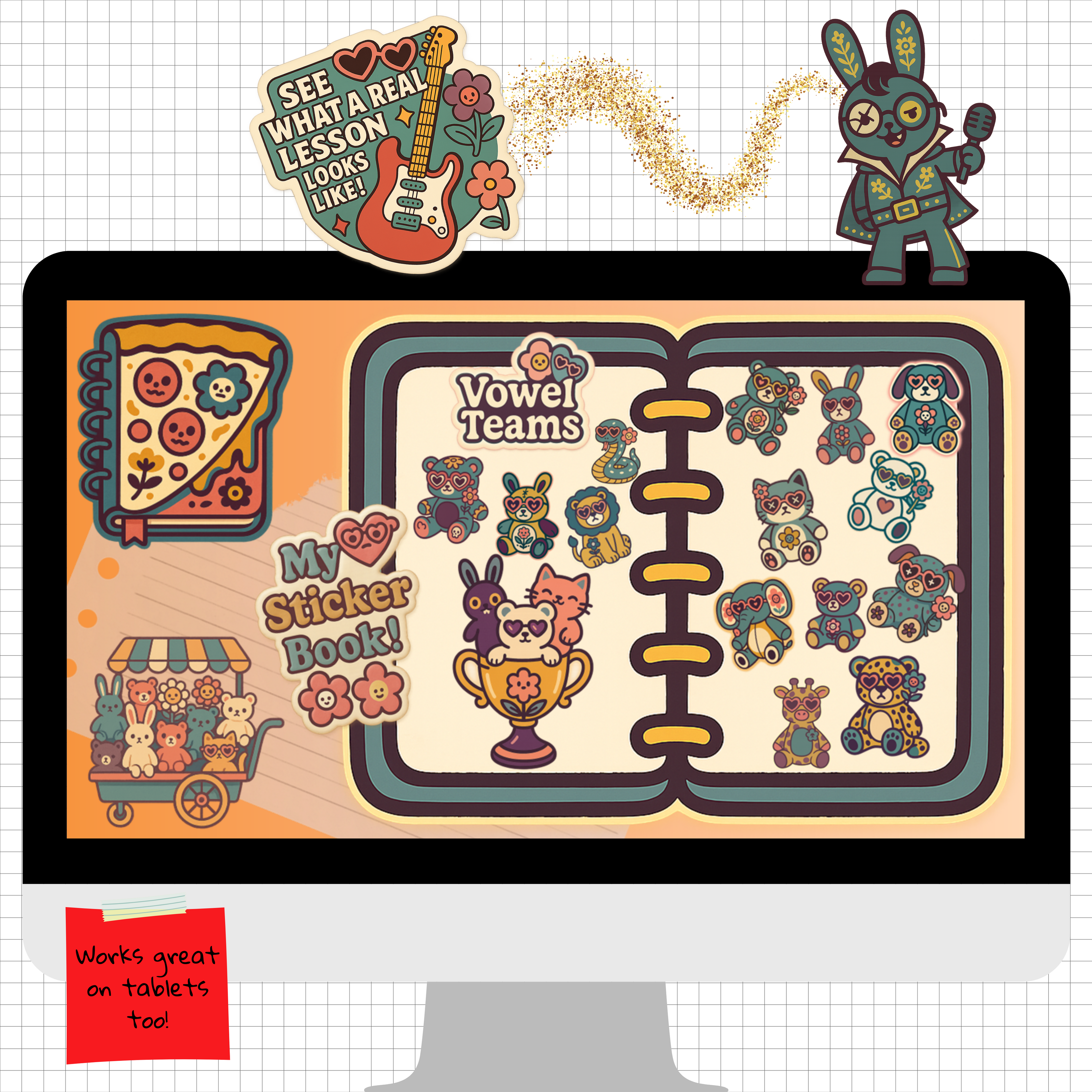
Friday Group
Friday Group
Description
Fridays at Tokiphon bring everyone together. Students stay in their current level but join a larger group for something special. After a shorter round of core activities, we dive into our Gearlings story of the week, then explore vocabulary, key events, and big ideas through reading comprehension. It’s the same phonics magic, expanded into understanding.
Student Activities
- Continue weekly phonics work at each student’s level
- Participate in a shared Gearlings story adventure
- Learn and review vocabulary from the story
- Answer reading comprehension questions as a group
- Discuss character actions, setting, and story structure
- Practice speaking and listening through shared discussion
- Celebrate insights and progress with stickers and applause
Skills Covered
- Reinforcement of weekly phonics targets
- Vocabulary development through story context
- Reading comprehension with guided questions
- Understanding story structure and character roles
- Group discussion and critical thinking
- Listening, responding, and building confidence
- Motivation and social learning in a joyful setting
